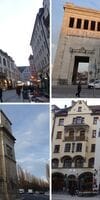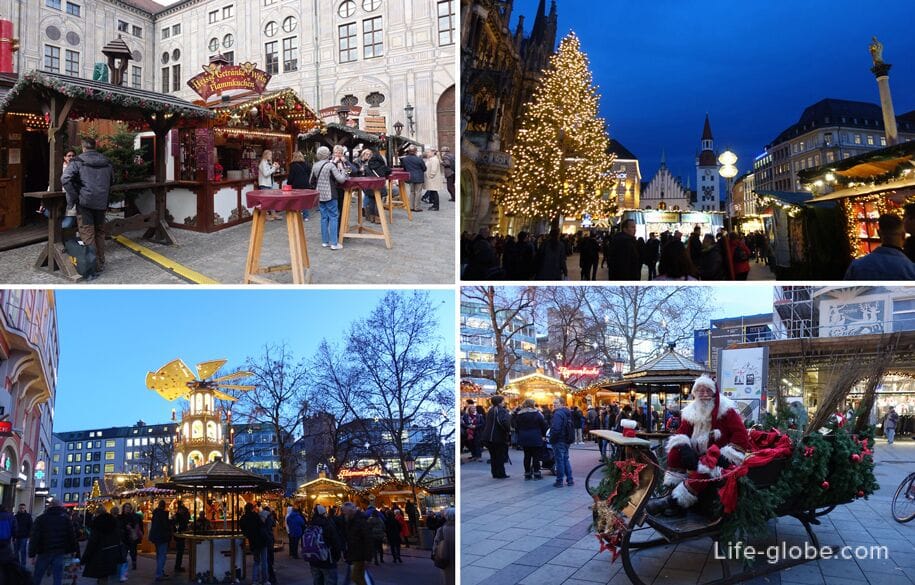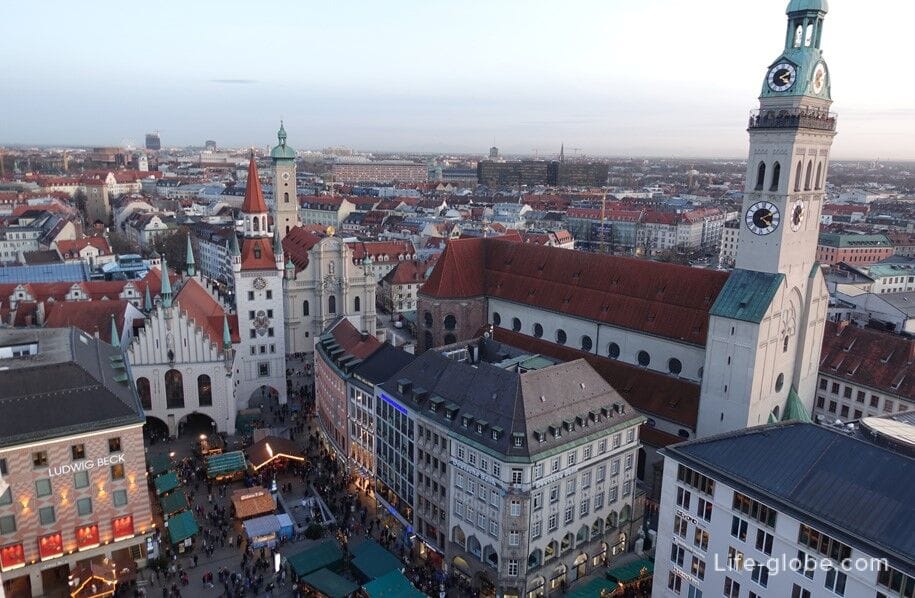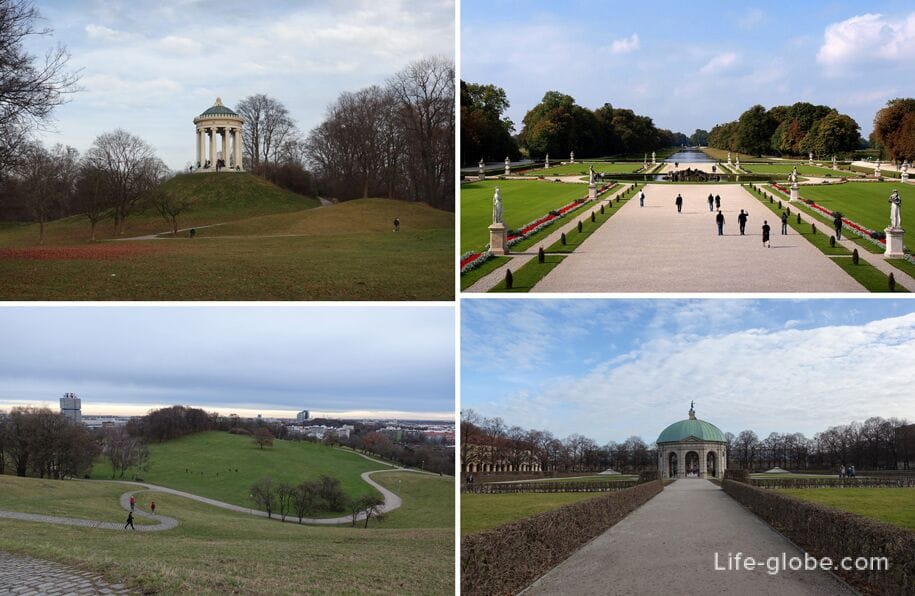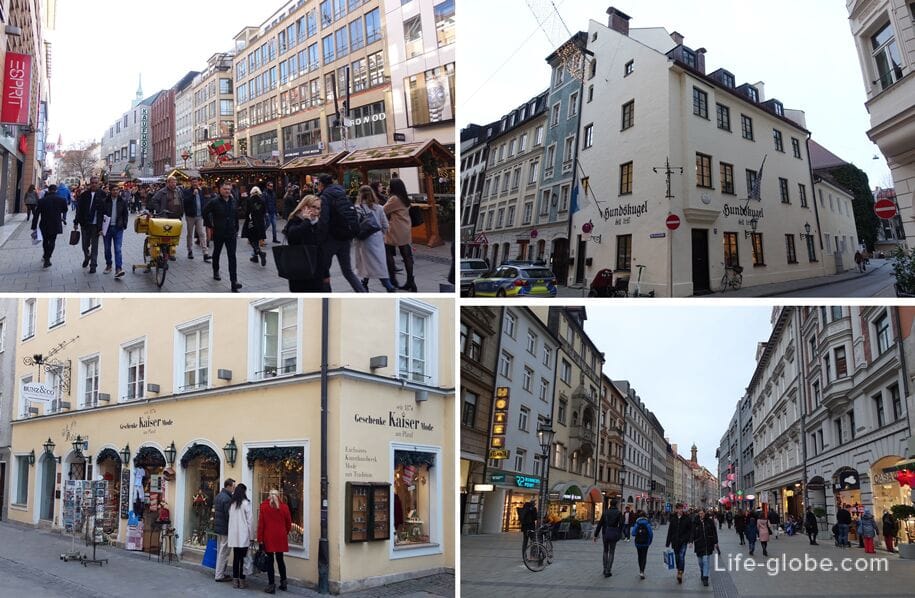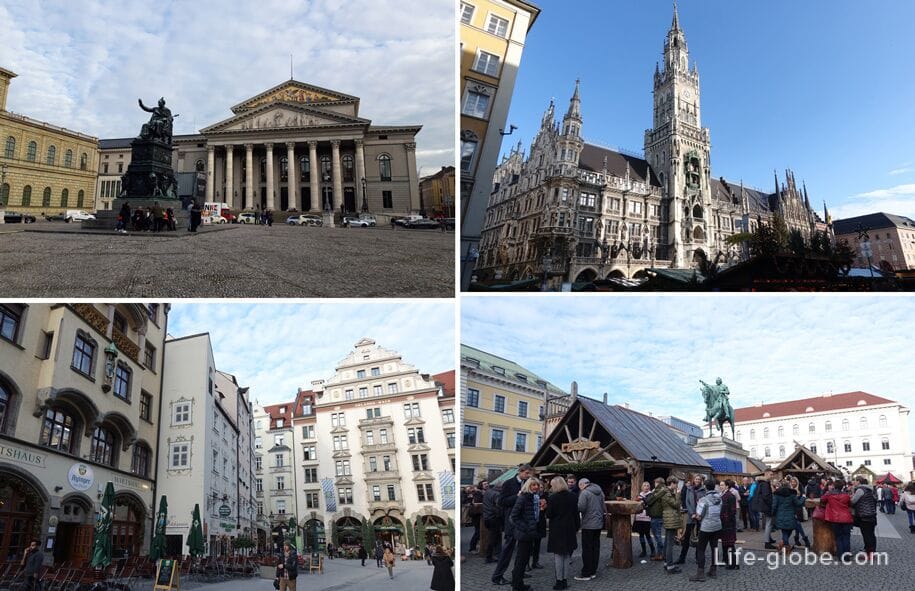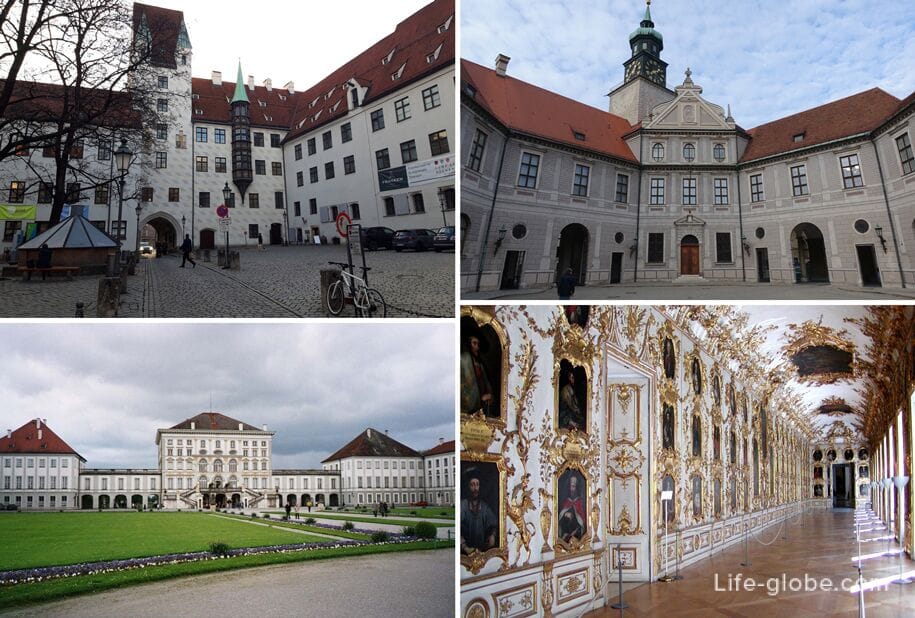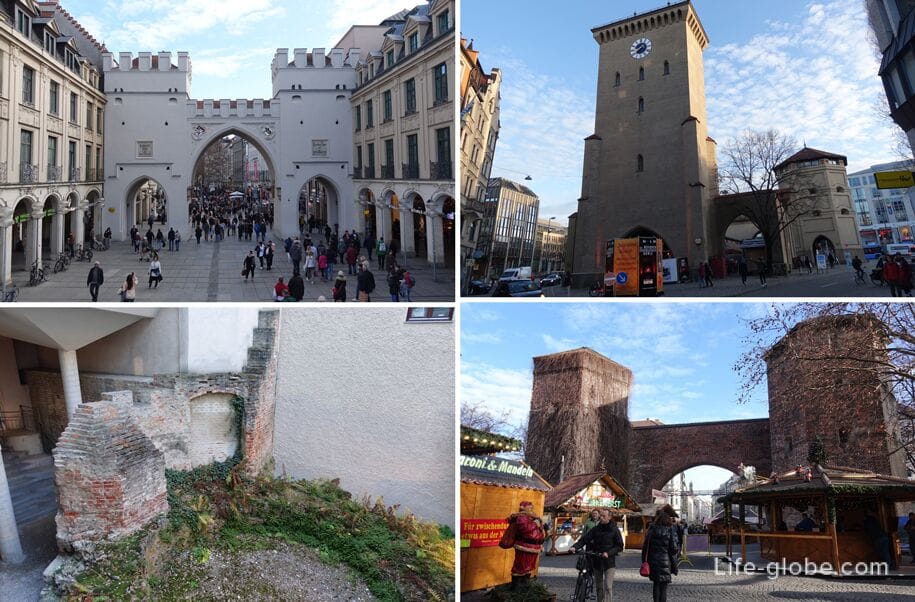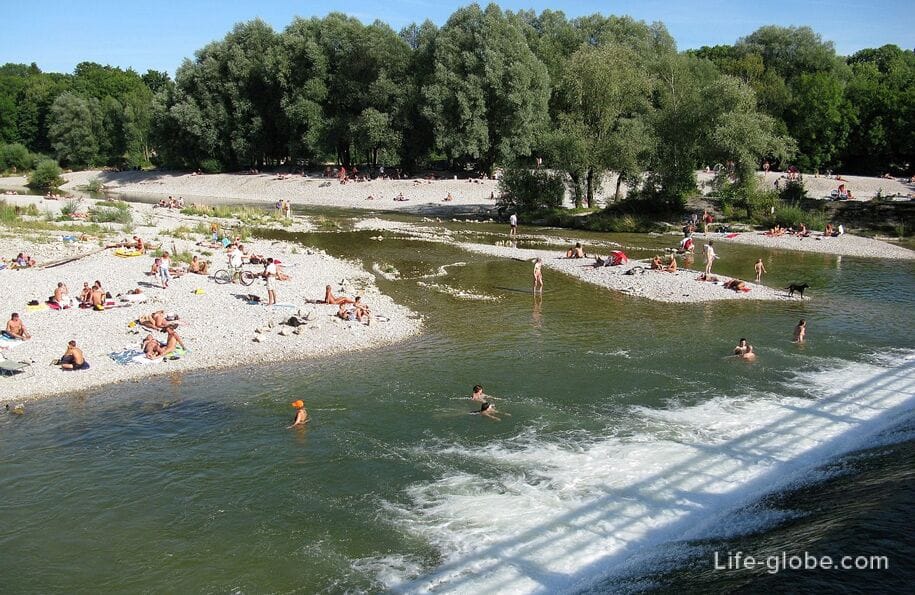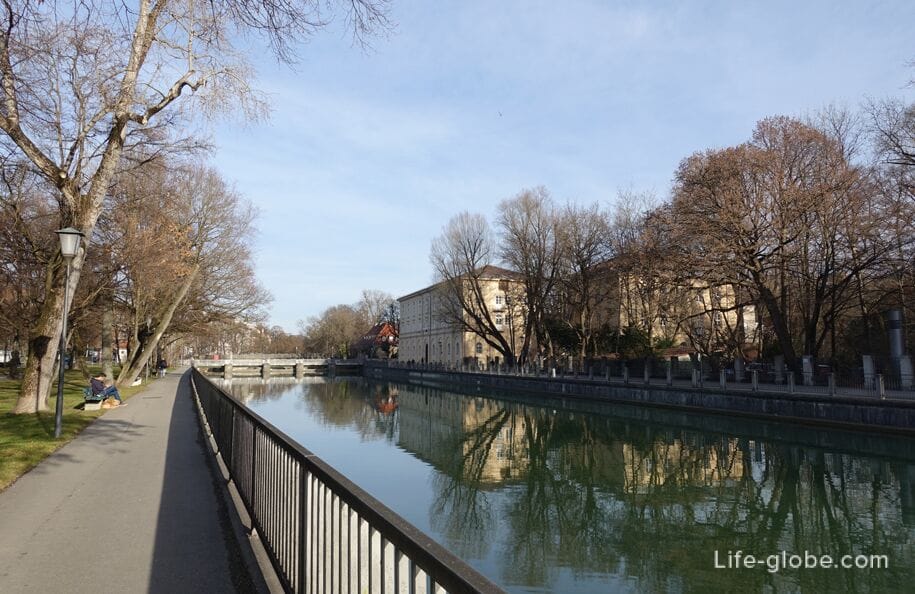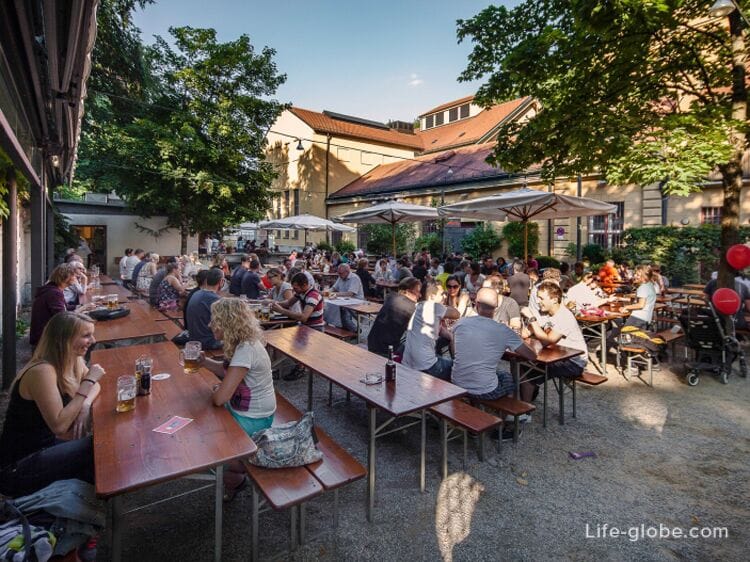This article presents a list (with photos, descriptions and websites) of the main and most "bright" sights and museums of Munich, which are worth visiting first of all or if the city is not allocated so much time (1-2-3 days).
If you need the most complete and detailed list of attractions, museums, significant objects and interesting places in Munich, then you can see it here →
TOP attractions in Munich
Marienplatz with town halls
Marienplatz is the central square of Munich, where the traditional history of Munich began with the founding of the market in 1158.
Today, Marienplatz is a pedestrian zone.
The center of the square is decorated with a high column of Mary (Mariensäule), dedicated to St. Mary as the "patroness of Bavaria". The column was erected in 1638 to celebrate the end of the Swedish occupation during the Thirty Years ' War.
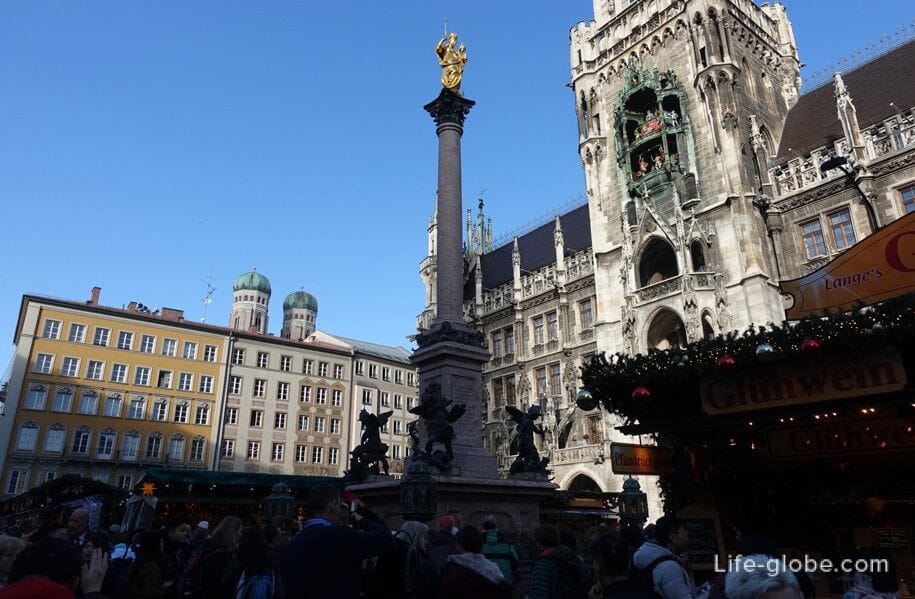
The north and east sides of Marienplatz are marked by two town halls:
The New Town Hall (Neues Rathaus) is a neo - Gothic brick and stone building that dominates the square, and was built from 1867 to 1909.
Currently, the town hall is a complex of buildings with courtyards and is the residence of the mayor and the headquarters of the Munich City Council.
At the top of the Town Hall tower is an observation deck, giving a 360-degree view of Munich.
Address of the new town hall: Marienplatz, 8.
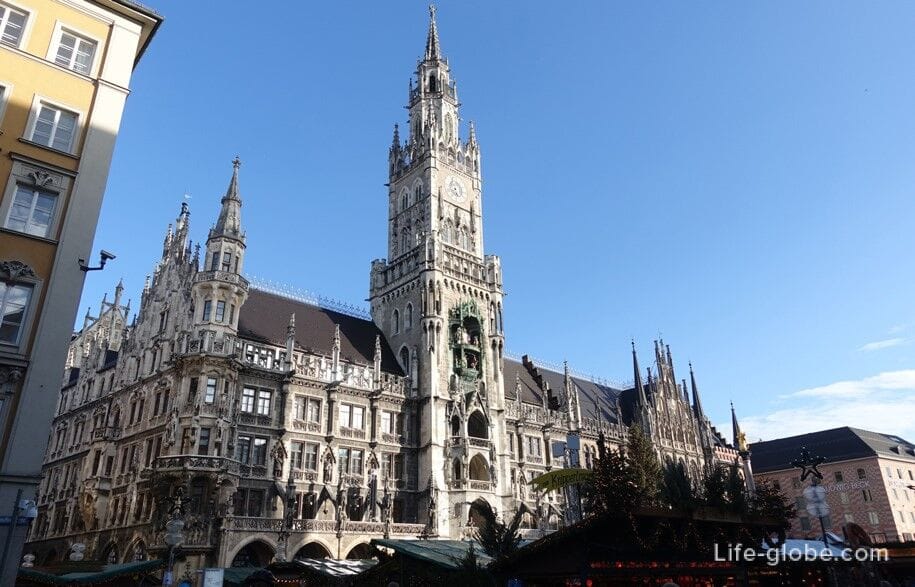
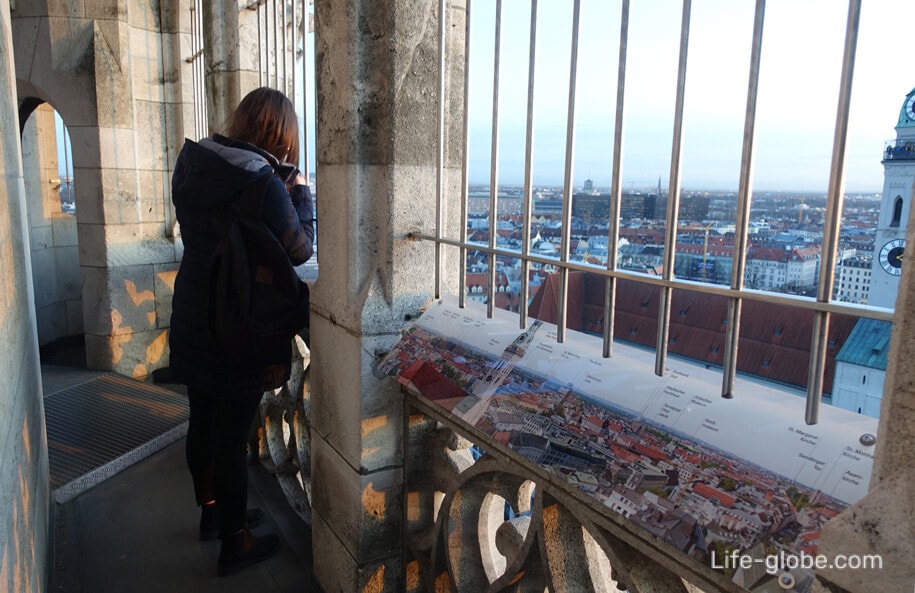
The Old Town Hall (Altes Rathaus) dates back to the 14th century and is the predecessor of the New Town Hall.
The Old Town Hall originated in part from the old Munich city fortifications, which were converted into a 56-meter-high town hall tower.
On the four floors of the Town Hall tower is the Toy Museum (Spielzeugmuseum), whose private collection demonstrates the development of toys over four centuries.
Address of the Old Town Hall: 15 Marienplatz. More about Marienplatz…
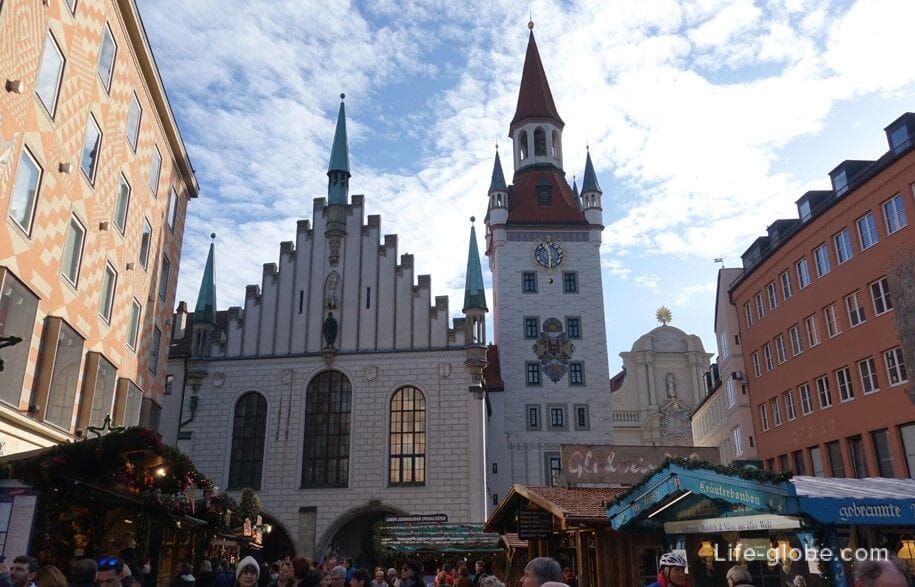
Frauenkirche
The Frauenkirche or Cathedral of the Blessed Virgin Mary / Cathedral of Our Lady (Frauenkirche, full name: Dom zu Unserer Lieben Frau) is the current cathedral of the Catholic Archdiocese of Munich and Freising, whose history dates back to 1468.
Inside, the Frauenkirch impresses with its size and, thanks to its non-congestion and simplicity, fascinates with its spaciousness.
The church building itself is distinguished by two high towers-bell towers.
At the top of the south tower is an observation deck, giving panoramic views of the city and the surrounding area.
Address of the Frauenkirche: Frauenplatz 12 (Frauenplatz). More about the Frauenkirch…
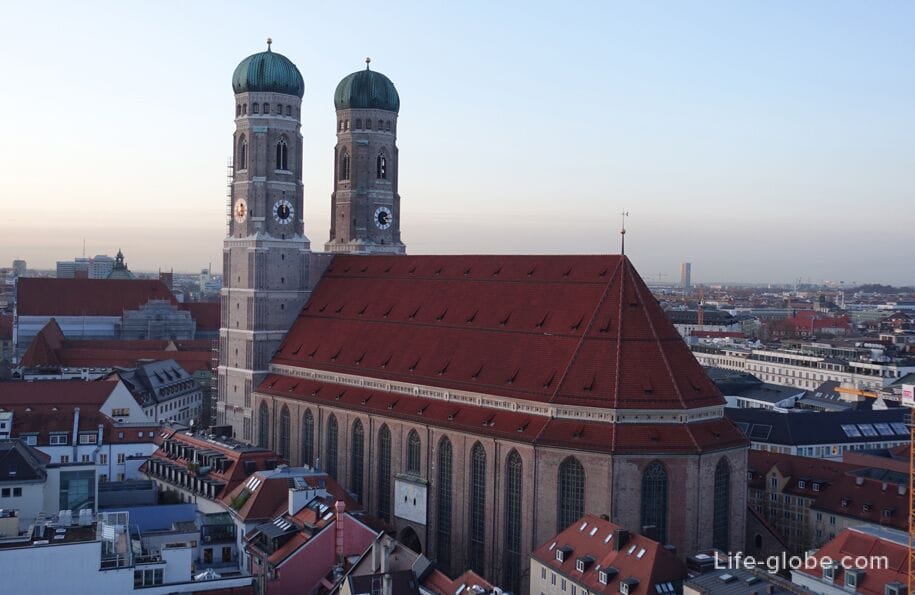
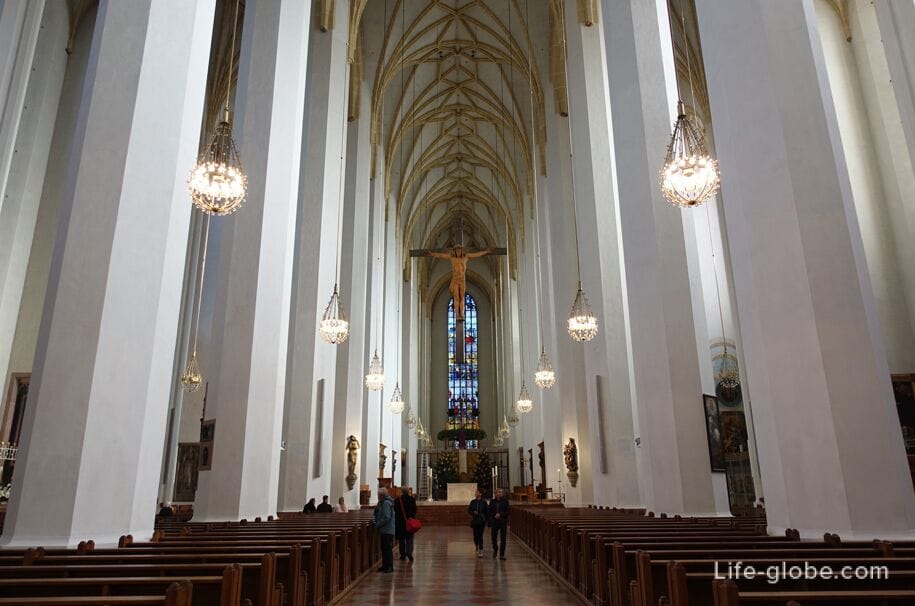
St. Peter's Church
The church of St. Peter, also known as "Old Peter" (Peterskirche / Peterskirche, Alter Peter / Alter Peter) dates back to the 11th century.
In the walls of the church in a glass sarcophagus are the relics of one of the first Christian martyrs - Saint Munditia of Rome (Saint Munditia), decorated with jewels.
The bell tower of the church has a circular viewing platform that offers panoramic views, including the Marienplatz square, the old town and the surrounding area.
Address of St. Peter's Church: Rindermarkt, 1 (Rindermarkt). Learn more about St. Peter's Church and the observation deck…
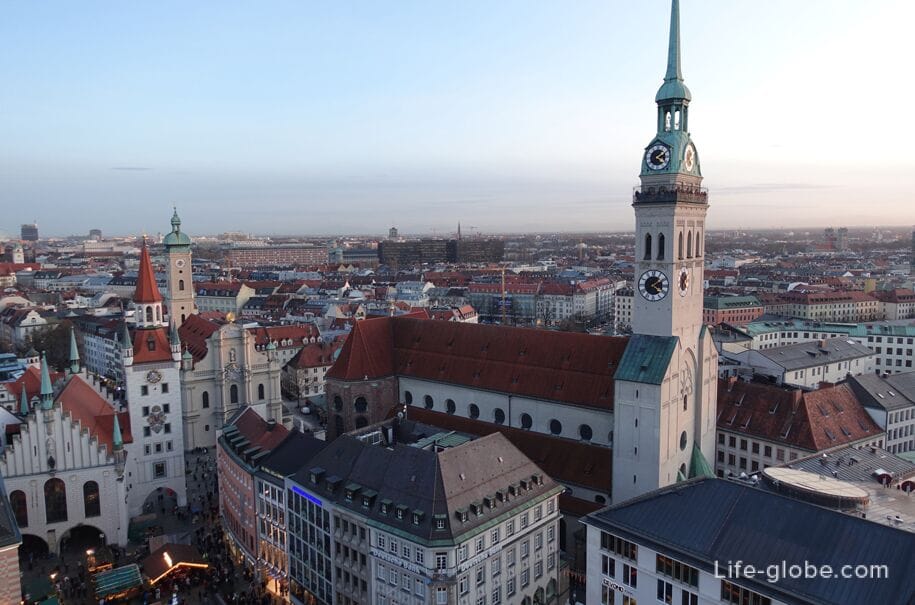
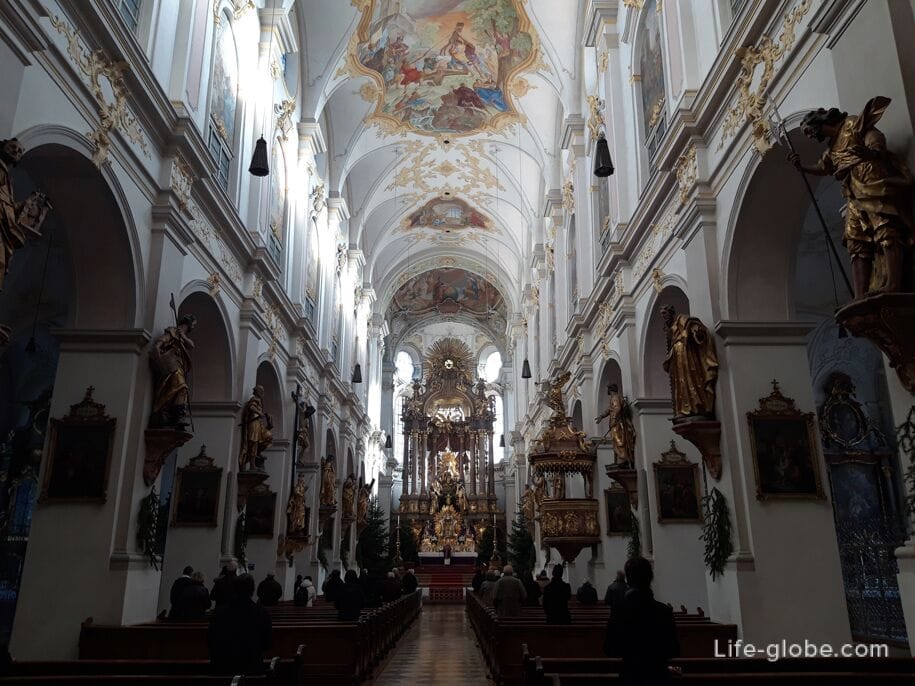
Azamkirche and the House of Azam
The Asamhaus and the Asamkirche are an architectural ensemble and a masterpiece of the late Baroque period.
The Azam House and the Azamkirche (St. John Nepomuk Church) were built by the Azam brothers between 1729 and 1746.
Today, the Azam house can only be seen from the outside, while the church can be entered and the interior of the shrine can be viewed.
Address of the Azam house and theAzamkirche : Sendlinger Strasse 32 and 34 (Sendlinger Straße). Learn more about Azamkirch and the Azam Brothers ' home…


Old courtyard
The Old Court (Alter Hof ) is a former ducal castle and the first imperial residence of the rulers of Bavaria, dating back to the 12th century, when the old court was built as a castle.
In 1255, Alter Hof became the residence of Ludwig II, Duke of Bavaria. Under Ludwig IV, the castle became a permanent imperial residence and remained so until the 15th century.
Today, the Old Courtyard is publicly accessible and is a complex of buildings with a courtyard. Learn more about the Old Courtyard…

Munich Residence
When, with the expansion of the city, the residence (the Old Courtyard) became unsafe, in 1385, the construction of the so-called "New Residence"began just to the north. The new residence later became a full-fledged residence of the rulers and turned into a luxurious palace, which was the largest inner city palace in Germany and is now called the Munich Residence (Münchner Residenz).
Today, the Munich Residence is one of the most important art museums in Europe.
The residence includes: 10 courtyards, the residence museum, the treasury, the Munich State Coin collection, the Cuvillier Theater, the library, the court Church of All Saints, and the Bavarian Academy of Sciences.
The address of the Munich residenceis 1 Residenzstrasse. Munich residence website: residenz-muenchen. Learn more about the Munich Residence…
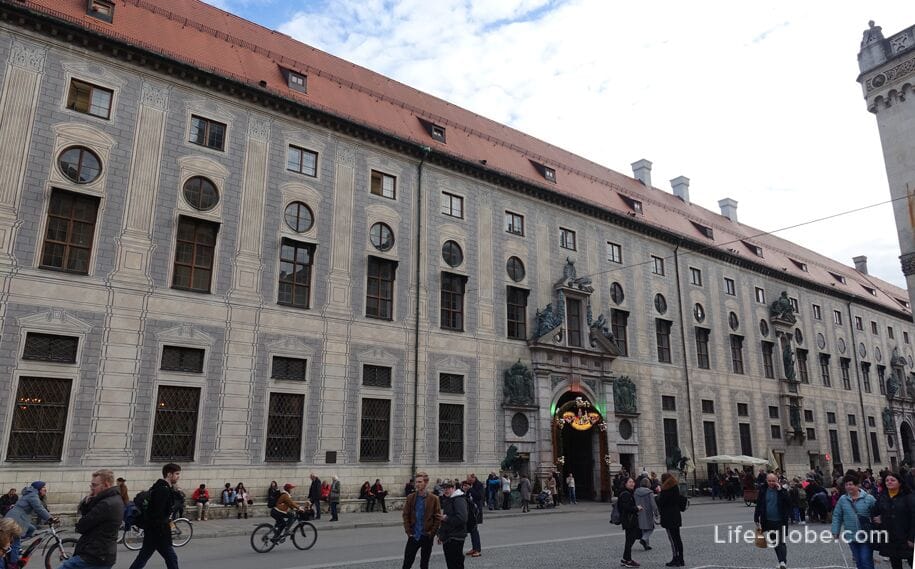
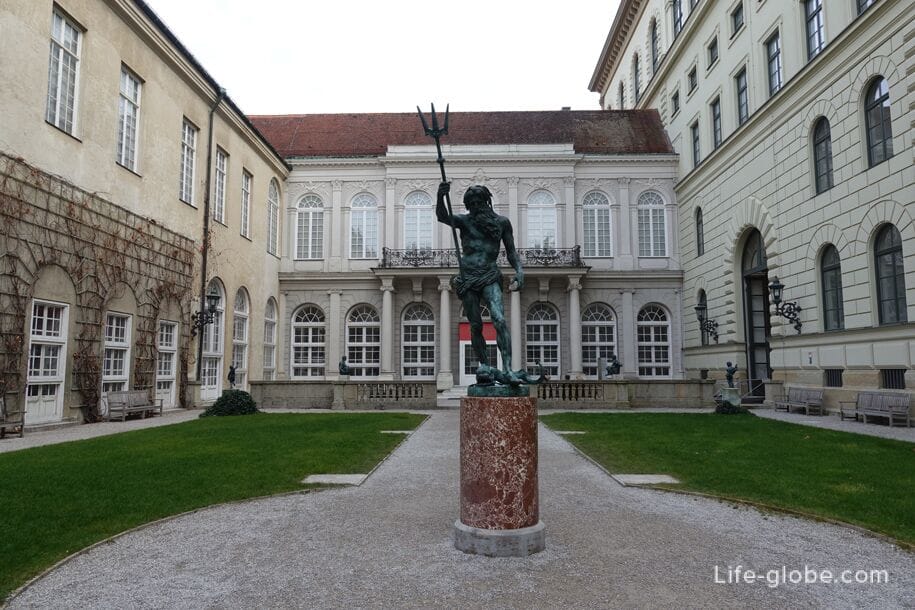
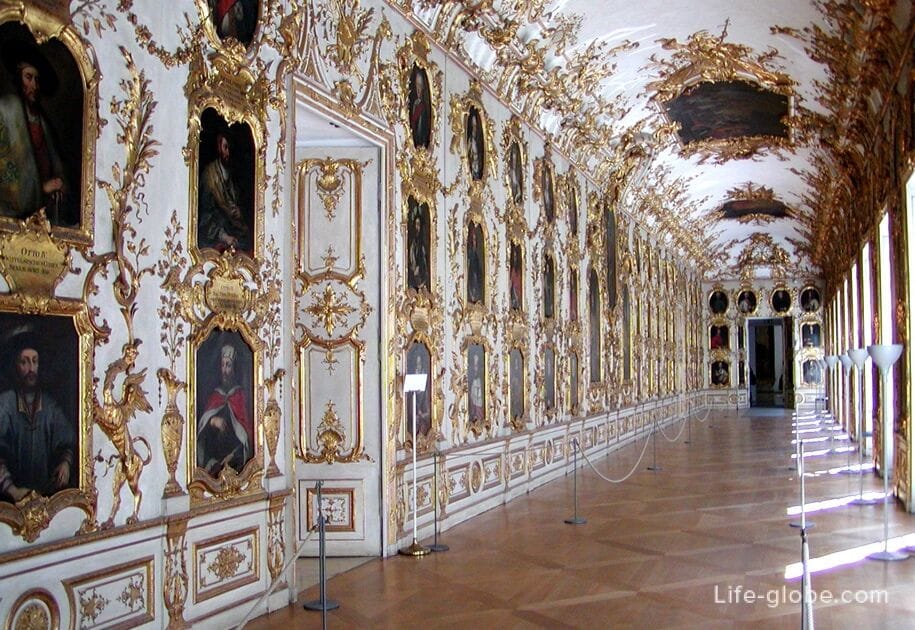
Hofgarten Park
Adjacent to the north wing of the Munich Residence is the Hofgarten Park, which was originally built as a court garden attached to the Munich residence.
Today it is a public park, bordered on both sides by arcades. On the eastern side of the park is the Bavarian State Chancellery. The center of the park is decorated with a pavilion (the temple of Diana), created by Heinrich Schon the Elder in 1615.
The main entrance to the park opens onto the Odeonsplatz.
Park address: Hofgartenstrasse 1 (Hofgartenstraße). Learn more about the Hofgarten Park…
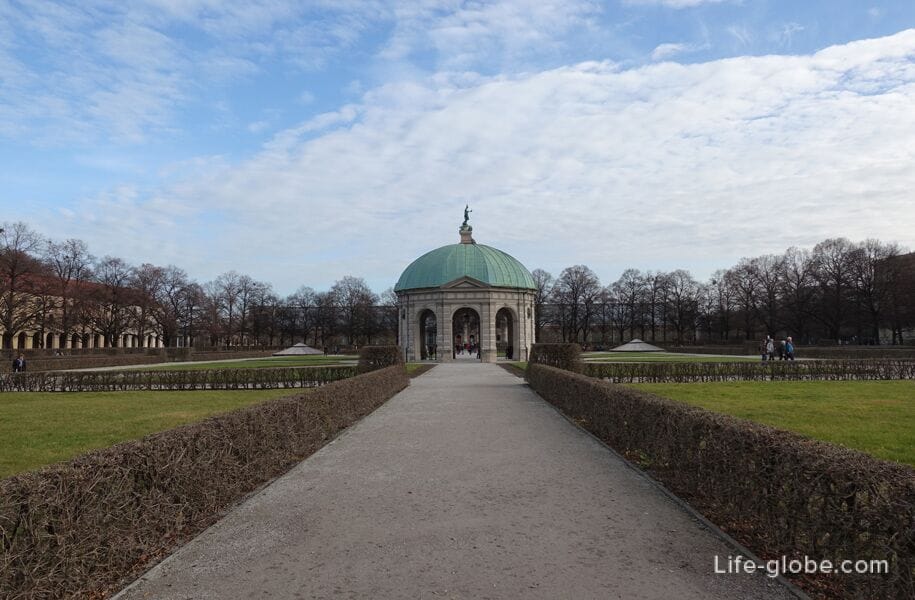
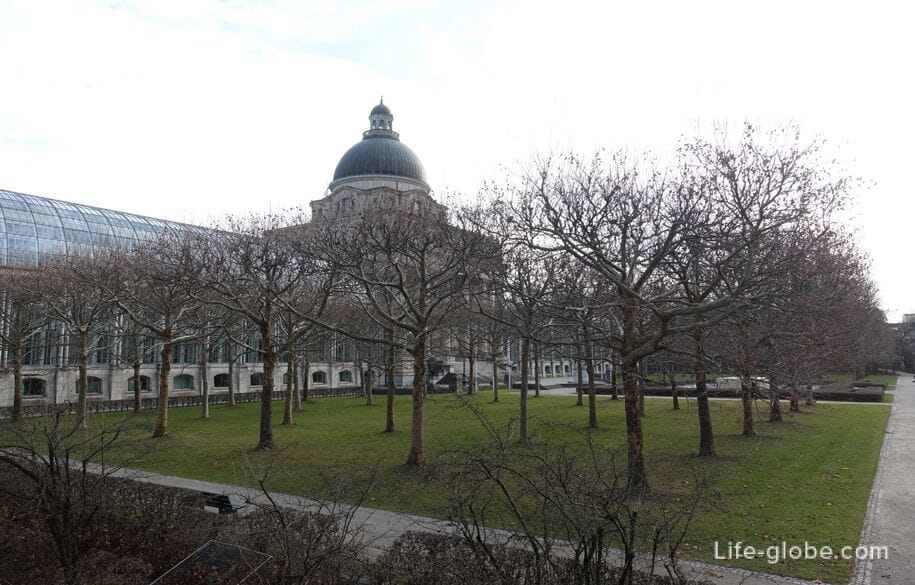
Odeonsplatz Square
Odeonsplatz (Odeonsplatz) was founded under King Maximilian I of Bavaria on the site of the city wall destroyed in 1791 and with the aim of replacing the Schwabing Gate (Schwabinger Tor) with a new square.
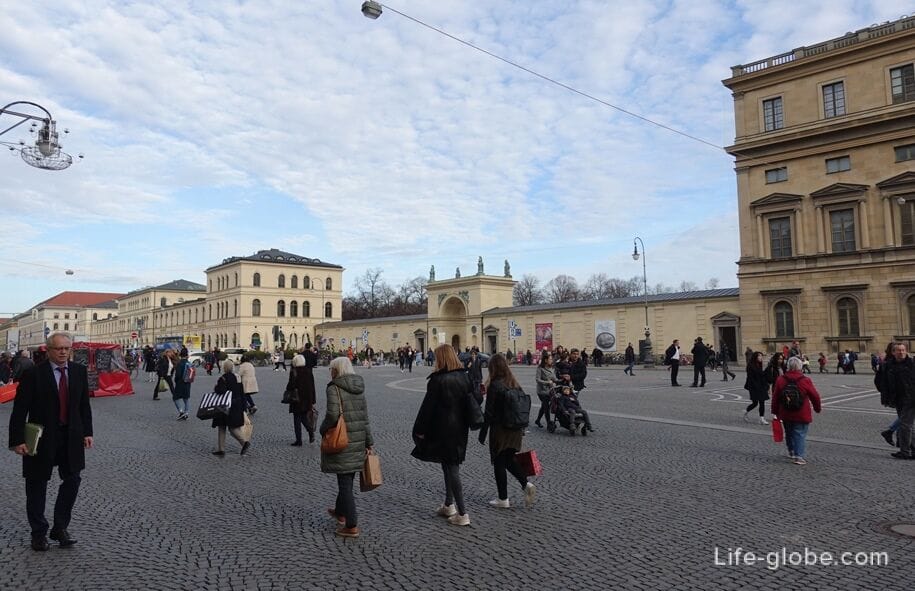
Odeonsplatz is home to such significant objects as:
- Feldherrnhalle - the so-called "Hall of the Bavarian Generals", which is a monumental loggia and monument built in the name of King Ludwig I in 1841-1844 to honor the glory of the Bavarian army and its victorious generals;
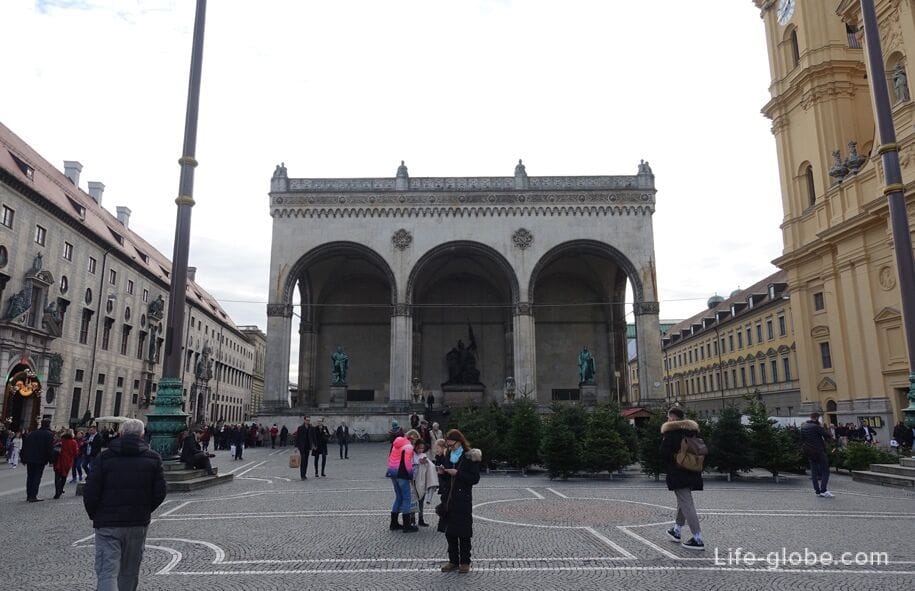
- St. Cajetan's Theatre Church (Theatinerkirche St. Kajetan), which is a Catholic church that was the court, cathedral, and order church of the Theatines.
The church was established in gratitude for the birth of the long - awaited heir to the Bavarian crown-Prince Max Emanuel in 1662;
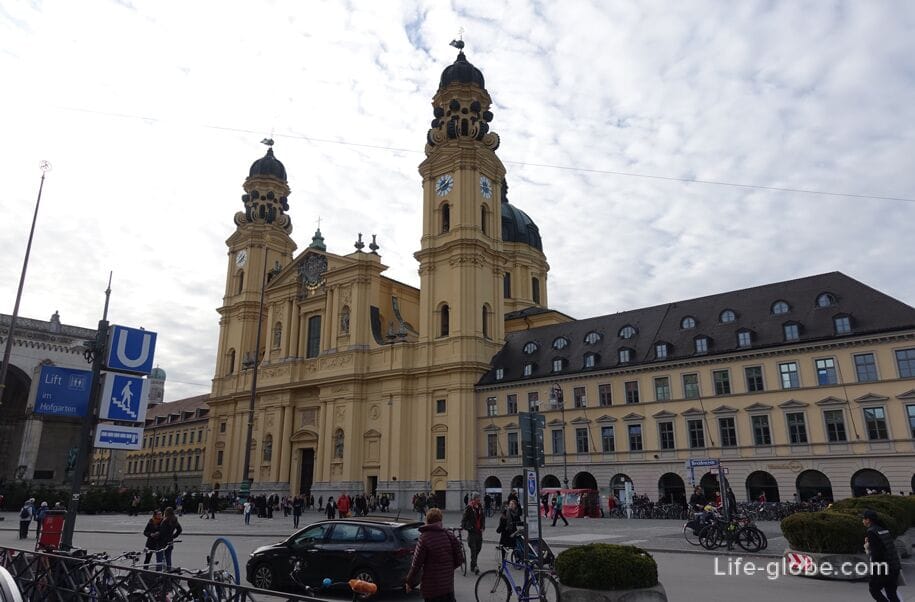
- also: Moy Palace, a wing of the Munich Residence; the main entrance to the Hofgarten Park; the monument to Ludwig I; the commercial building of the Bazaar; the former Odeon concert hall and Leuchtenberg Palace, built by the architect Leo von Klenze. More about Odeonsplatz…
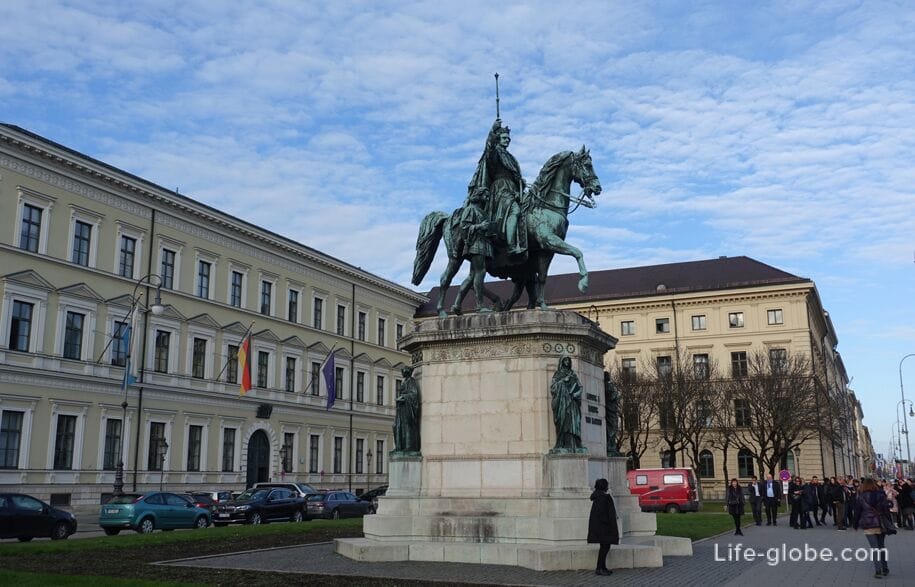
Max Joseph Square (National Theater and Residence Theater)
Max-Joseph-Platz Square was created in the early 19th century and named after King Maximilian I Joseph of Bavaria.
The center of the square is decorated with a monument to King Maximilian I (König Maximilian I Joseph von Bayern Denkmal), installed in 1835.
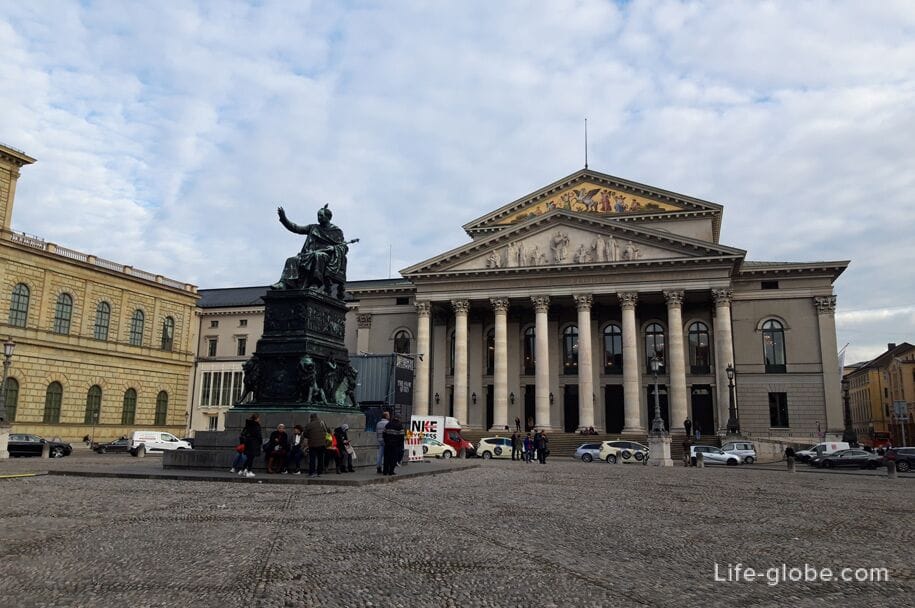
In the eastern part of the square there are two theaters:
- The National Theater (Nationaltheater) is an opera house whose history dates back to 1811 and whose main appearance is formed by a wide staircase, a portico with eight Corinthian columns and a triangular two-level pediment with statues and paintings;
- The Residenz Theatre is a historic court theatre, which was known as the Cuvillies-Theatre and was built in the immediate vicinity of the Munich Residence in 1751-1753.
Photo of the new Residence Theater (left) and the National Theater (right)
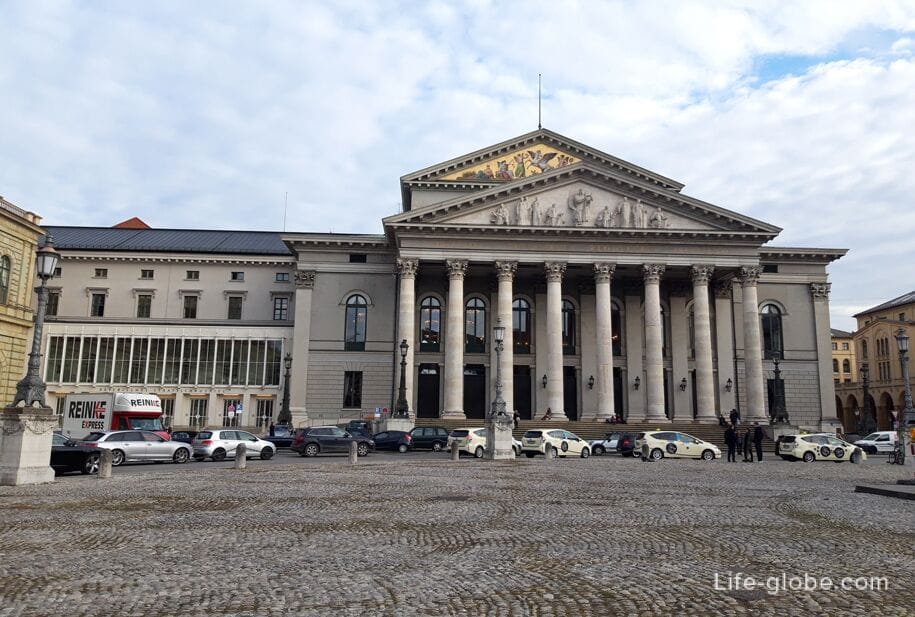
The northern side of the Max-Josef-Platz is marked by the southern wing of the Munich Residence.
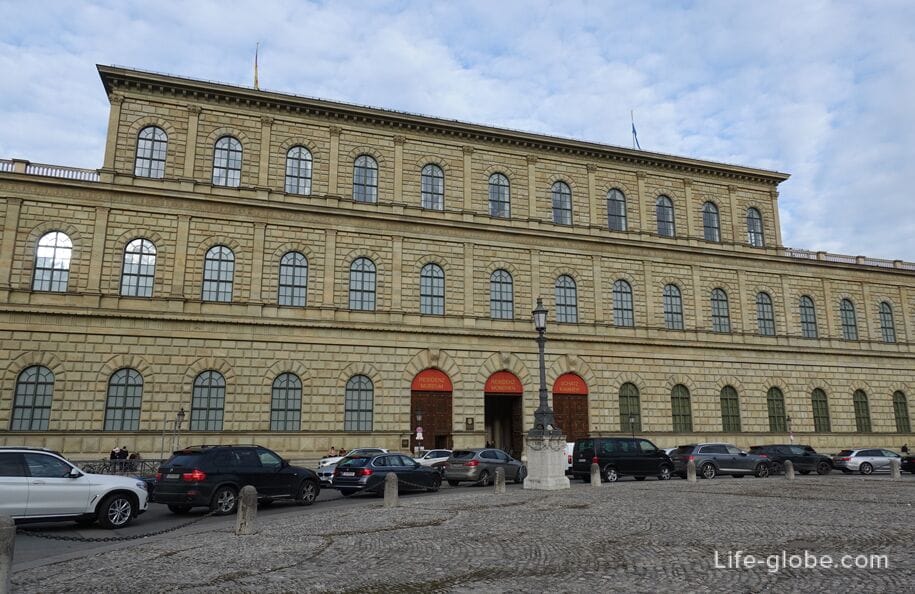
On the south side of the square in the 18th century in the Rococo style was built Thering-Jettenbach Palace (Palais Toerring-Jettenbach).
The main decoration of the current building of the former palace is its northern facade with a columned portico and frescoes of horse tamers.
In the 2000s, the building was transformed into a commercial and residential center.
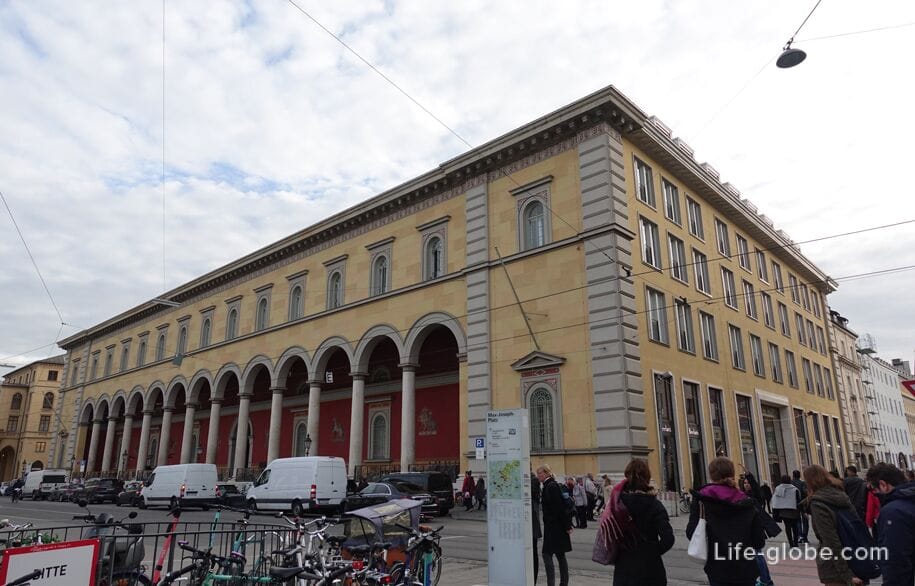
On the west side of Max Joseph Square are the bright facades of historic middle-class houses (now restored). Learn more about Max Joseph Square…
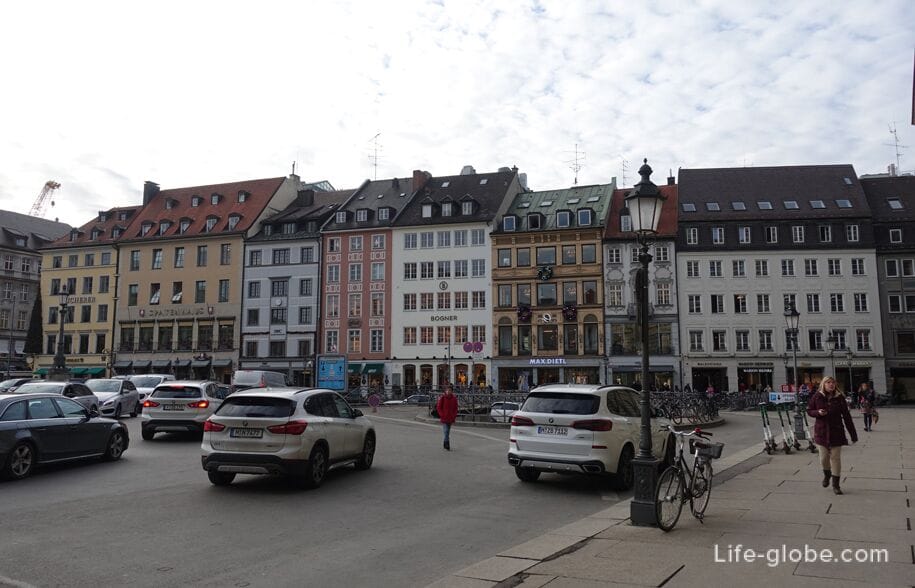
Hofbroyhaus (Platzl square)
The Hofbräuhaus is one of the oldest beer restaurants in Munich.
The Hofbroyhaus was founded in 1589 and opened by the Bavarian Duke Wilhelm V as a court brewery.
At the beginning of the 20th century, the Hofbroyhaus became one of the most popular places for recreation and meetings of citizens.
The Hofbroyhaus currently functions as a beer restaurant with a beer garden.
Restaurant website: hofbraeuhaus. Learn more about the Hofbroyhaus restaurant…
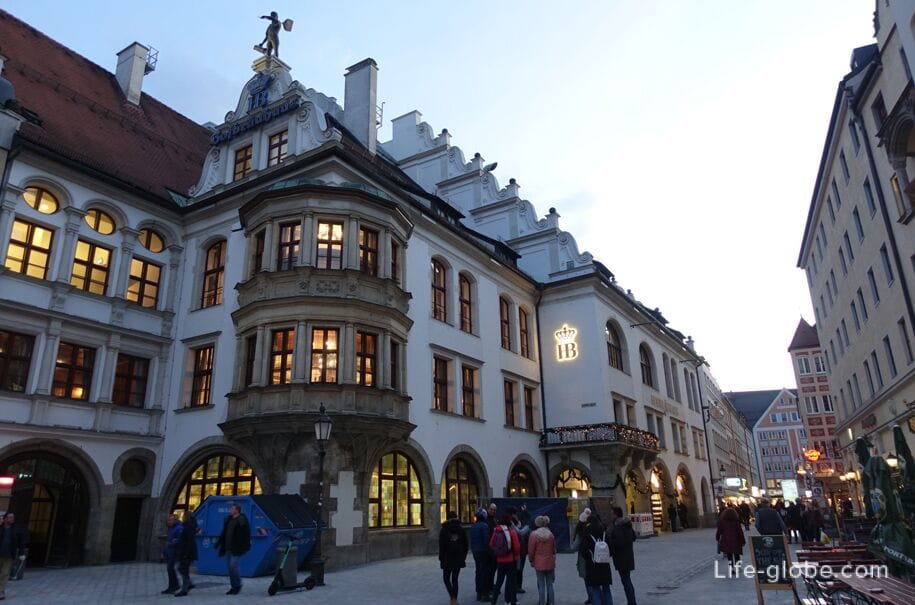
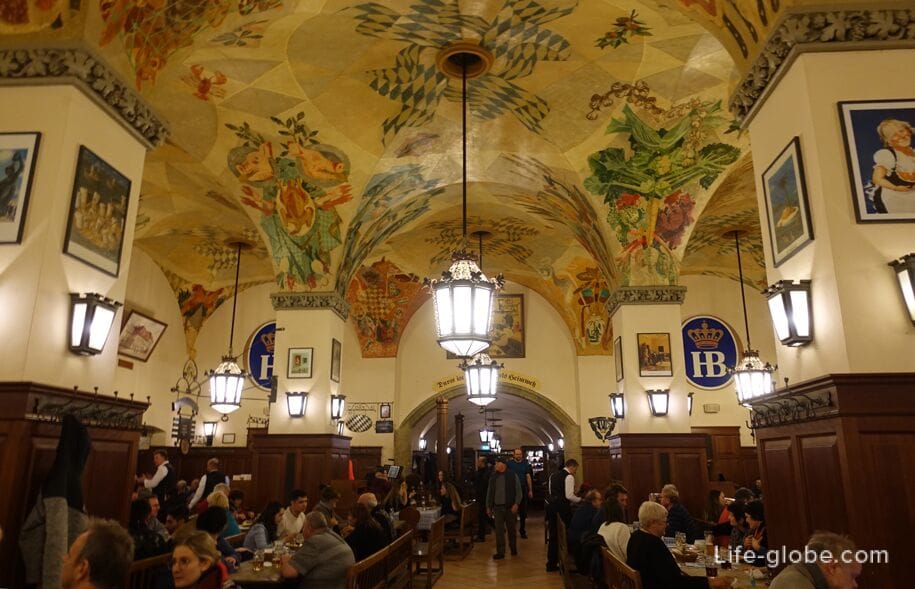
The Hofbroyhaus is located on Platzl Square , one of the most beautiful public squares in the historic part of Munich.
Platzl is a pedestrian area of irregular shape, around which there are bright historical buildings - old townhouses, on the first floors of which there are cafes and restaurants.
In addition to the Hofbroyhaus restaurant on Platzl Square, the Orlando House (Orlandohaus), built around 1900 and always used as a restaurant, tavern or coffee shop, is notable. Learn more about Platzl Square…

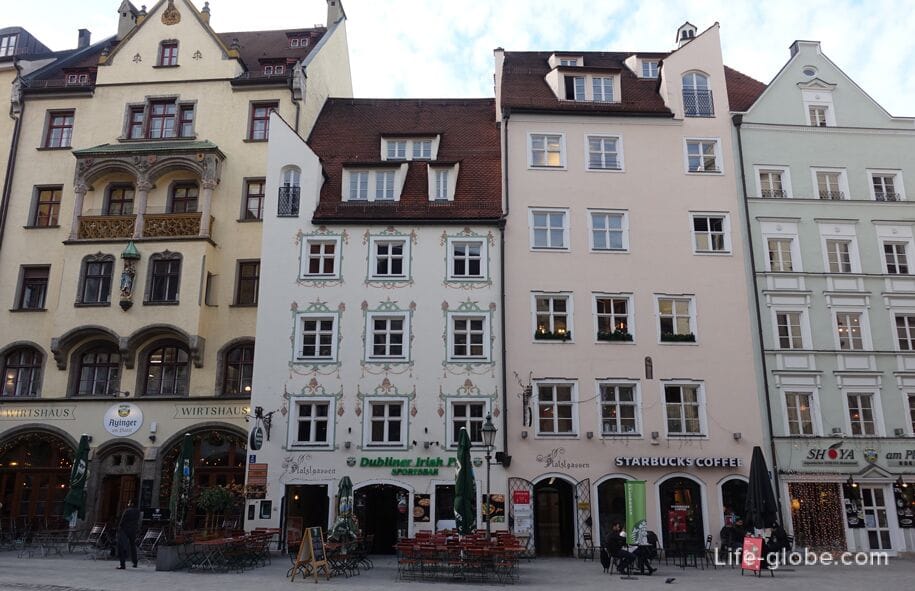
St. James ' Square
St. James ' Square (Sankt-Jakobs-Platz / Sankt-Jakobs-Platz) dates back to the 13th century and is today restricted from vehicle traffic.
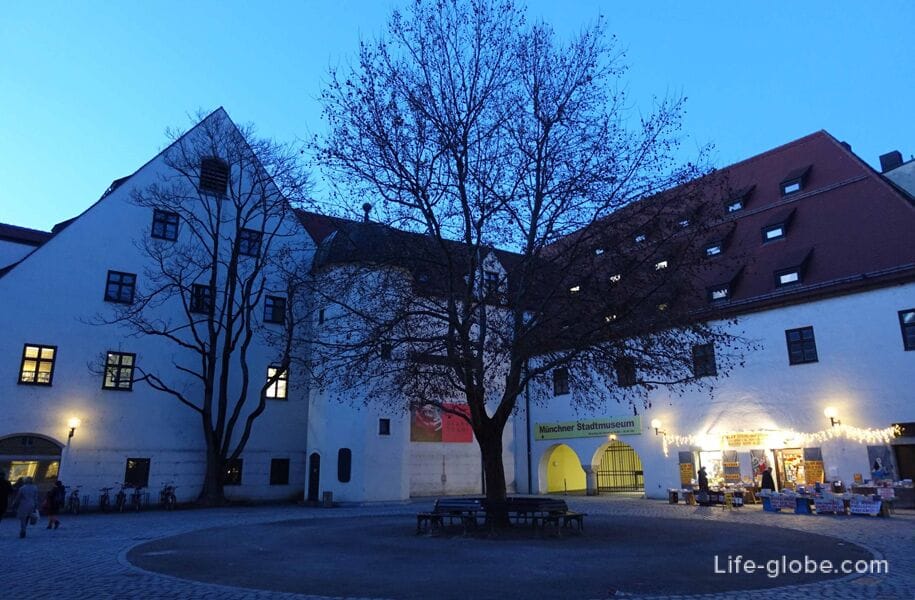
Objects in St. James ' Square:
- recreation areas and a fountain;
- complex of the Jewish center is an architectural ensemble of three independent buildings located in close proximity to each other: new synagogue Ohel Jakob (Synagoge Ohel Jakob); public cultural center of the Jewish community of Munich and Upper Bavaria; Munich Jewish Museum (Jüdisches Museum München), the concept of which provides for the transfer of the diversity of Jewish history, art and culture to the present day;
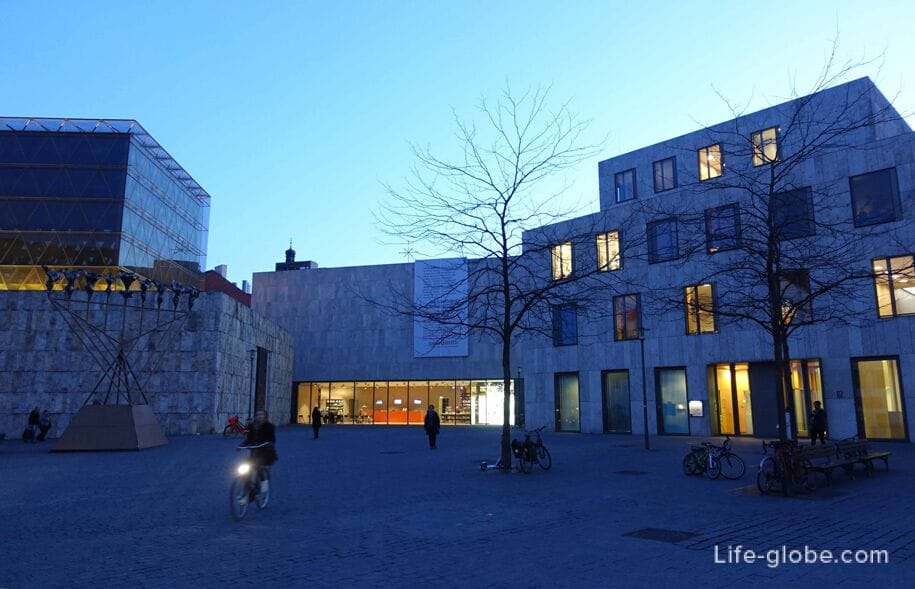
- Munich City Museum (Münchner Stadtmuseum) with the Museum of the History of Cinema (Filmmuseum).
The museum's exhibitions tell about the history and fate of the city, national socialism in Munich, migration, the history of cinema and puppet theater since the 19th century, fashion, music, advertising art, urban culture, etc.Museum website: muenchner-stadtmuseum;

- ORAG house (ORAG-Haus) - a historic building with bay windows, paintings and stucco on the walls.
The house was built in 1897 as a business building.
In 1929, the building became the property of the clothing atelier "ORAG", which is still located in the house;
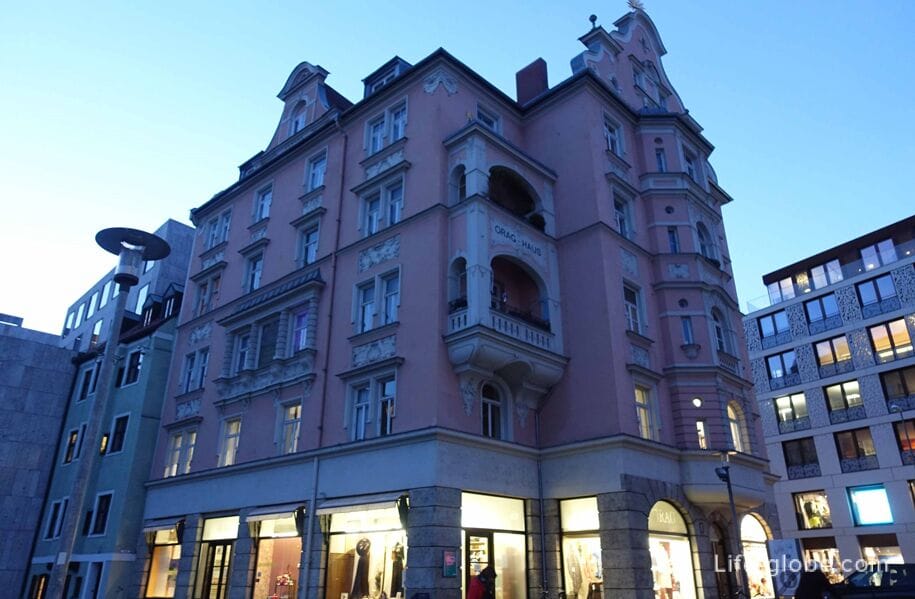
- Ignaz-Günther-Haus - a four-story narrow building with a gable mansard roof.
From 1761 to 1775, the house was the living and working place of the German sculptor and wood carver, working in the Bavarian Rococo technique - Ignaz Gunther;
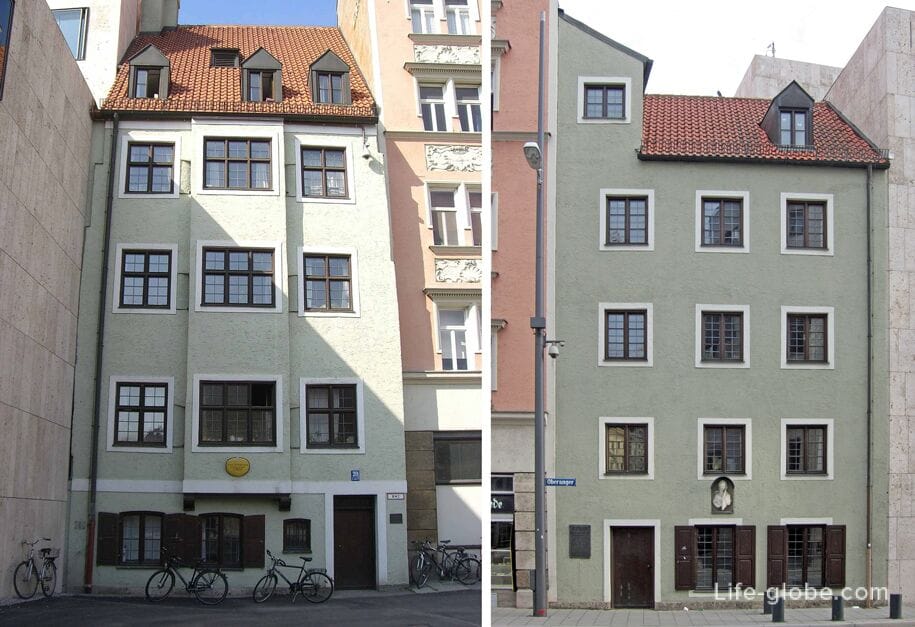
- St. Jakob am Anger Church (Kath. Kirche St. Jakob am Anger), dating back to the 13th century.
During the Second World War, the church was destroyed down to the outer walls. In 1955-1957, a new red brick building was erected. More about St. James' Square…
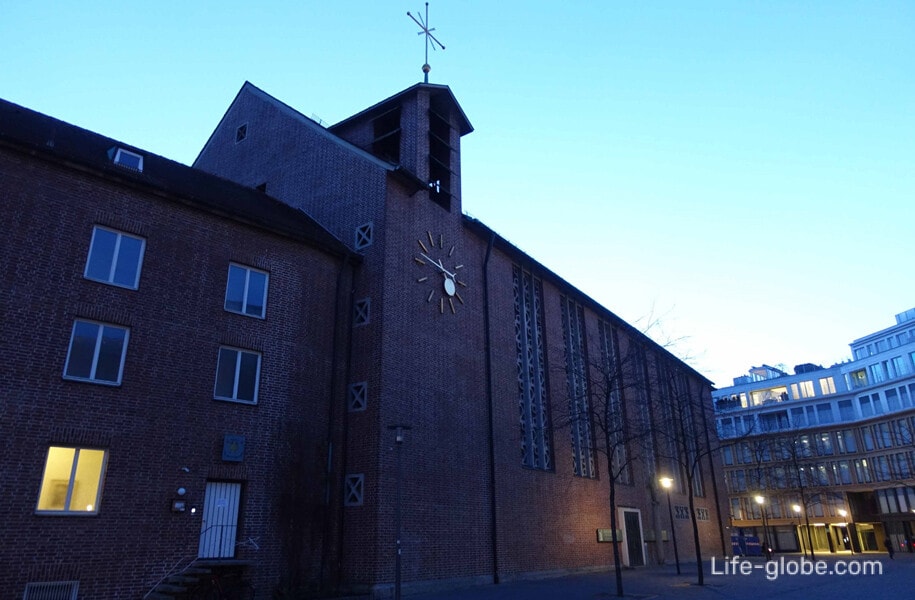
Viktualienmarkt Market
Viktualienmarkt (Viktualienmarkt) - an open-air market that operates all year round (from Monday to Saturday, except public holidays, from 8: 00 to 20: 00 hours).
On the market is the beer garden "Biergarten Am Viktualienmarkt", which, although not the largest in Munich, is certainly the most central.
On Christmas Eve and New Year's Eve, a Christmas market operates on the square. Read more about Viktualienmarkt...
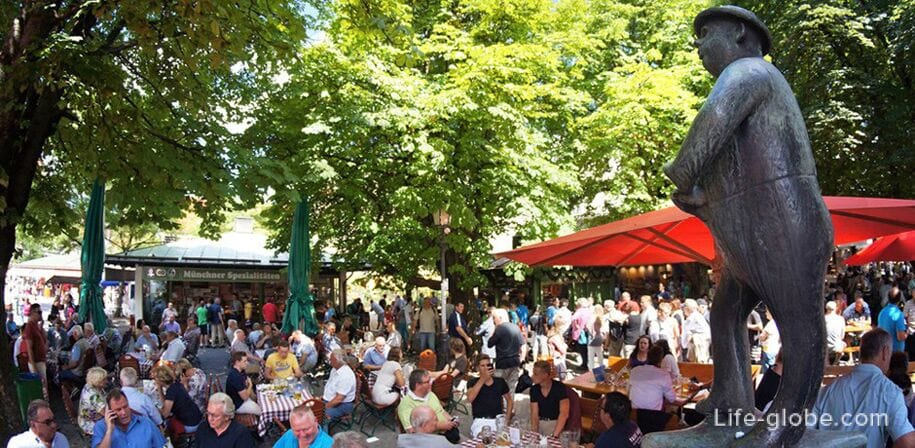
Munich Old Town City Gate
The Old City of Munich is surrounded by three preserved (now reconstructed) city gates, originally part of the second city defense system.
The gate, together with other fortifications, was built by order of Ludwig IV of Bavaria, between 1285 and 1337.
Sendling Gate
The Sendlinger Tor (Sendlinger Tor) is located on the square of the same name, in the southern part of the old town, at the end of Sendlinger Straße.
The gate has a large central arch, two flanking towers with arched passages, and part of the inner wall. Learn more about the Sendling Gate…
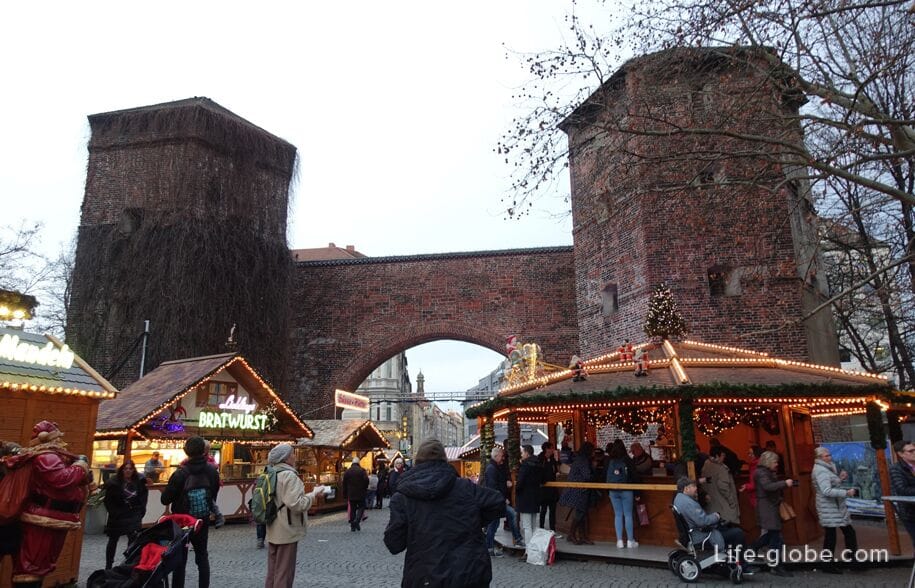
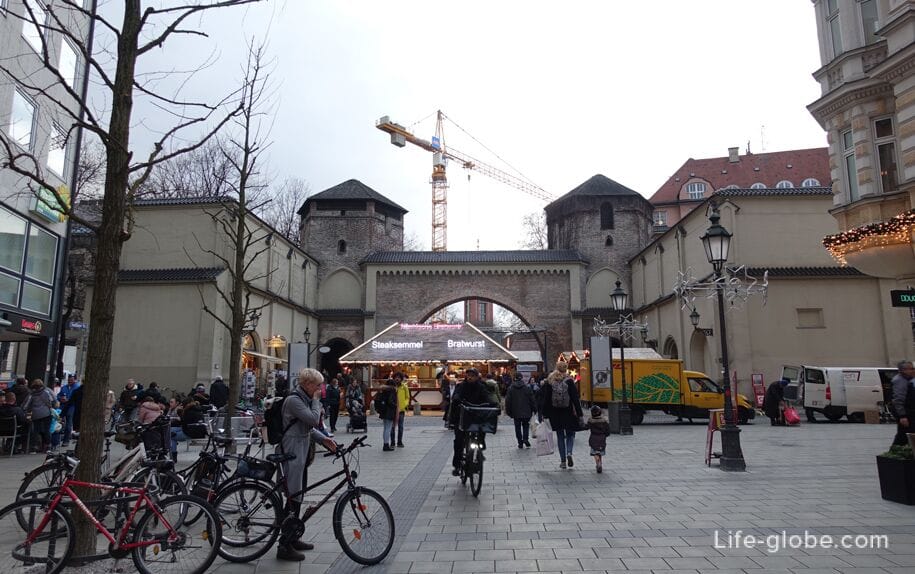
Izar Gate
The Isar Gate (Isartor) is located on the eastern edge of Munich's old town, at: Tal Street, 50 (Tal).
Today, the gate consists of: a rectangular clock tower and a trapezoidal courtyard, into which archways lead. The courtyard itself is surrounded by walls, with two octagonal side towers with arched openings (passageways).
On the eastern wall of the gate is a mural "The triumphal procession of Ludwig IV of Bavaria after his victorious battle against Frederick III the Fair at Muldorf in 1322".
In the side towers of the gate is the museum of Karl Valentine (Valentin Karlstadt Musäum), dedicated to the Bavarian comedian Karl Valentine and his fellow actress Liesl Karlstadt. Learn more about the Izar Gate and the museum…

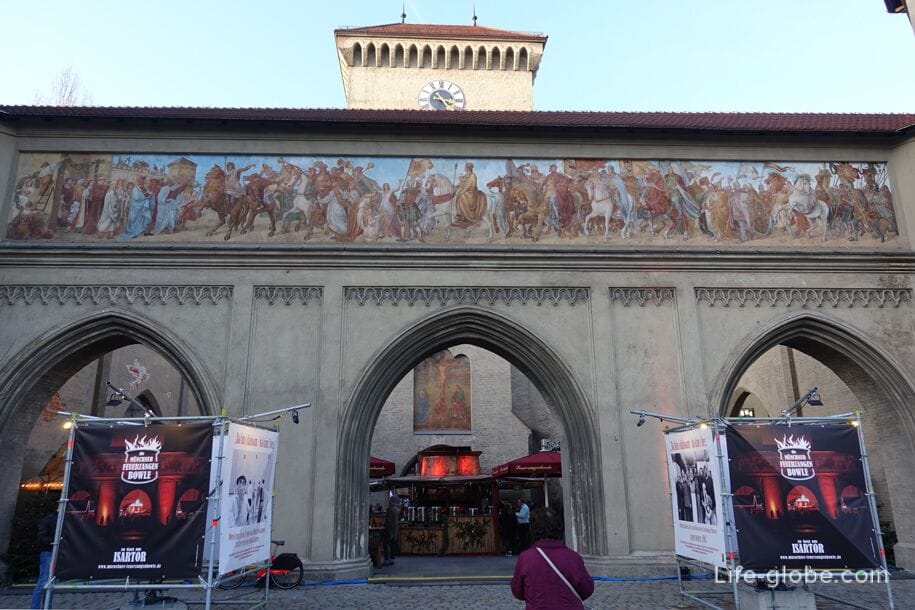
Charles Gate
The Karlstor Gate marks the western border of Munich's historic old town.
The gate consists of two small pseudo-Gothic towers connected by a bridge. The portals (passageways) in the gate are made in the form of three high pointed arches. Learn more about the Charles Gate…
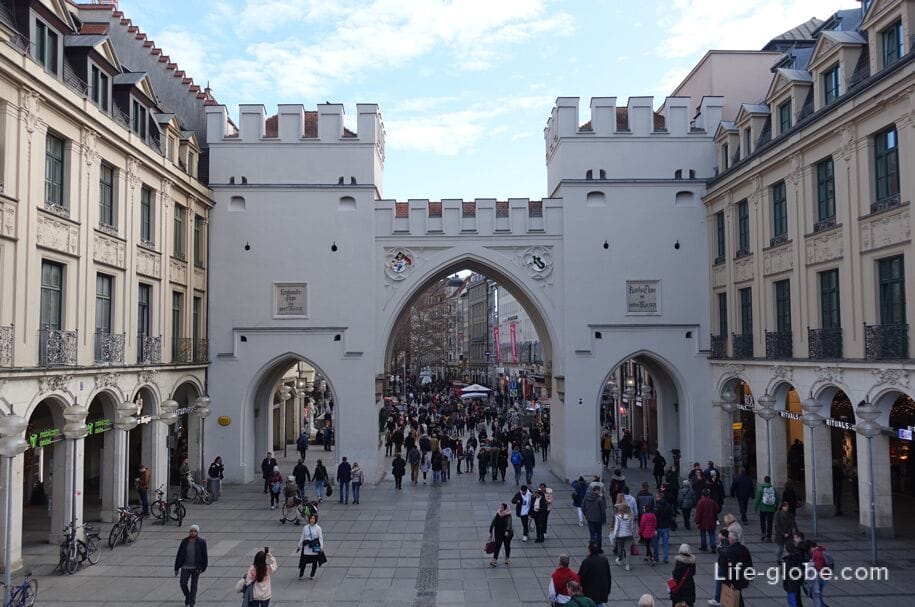
Karlsplatz
Karlsplatz is one of the most important squares in Munich.
The dominant feature of the square is the Charles Gate.
Also on the square is: a fountain, a department store and a shopping center.
In the winter season, from about mid-November to mid-January, the square has an open-air ice rink. Learn more about Karlsplatz...
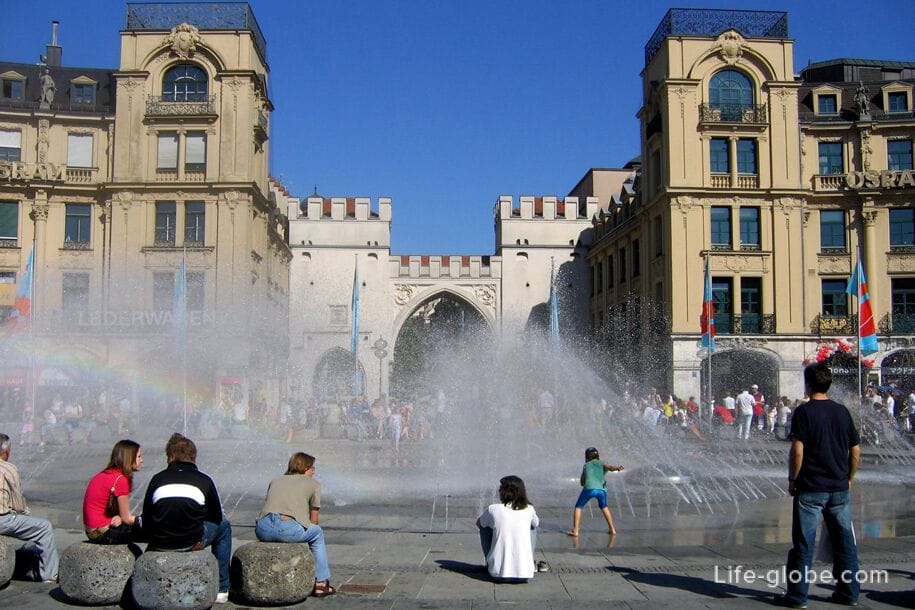
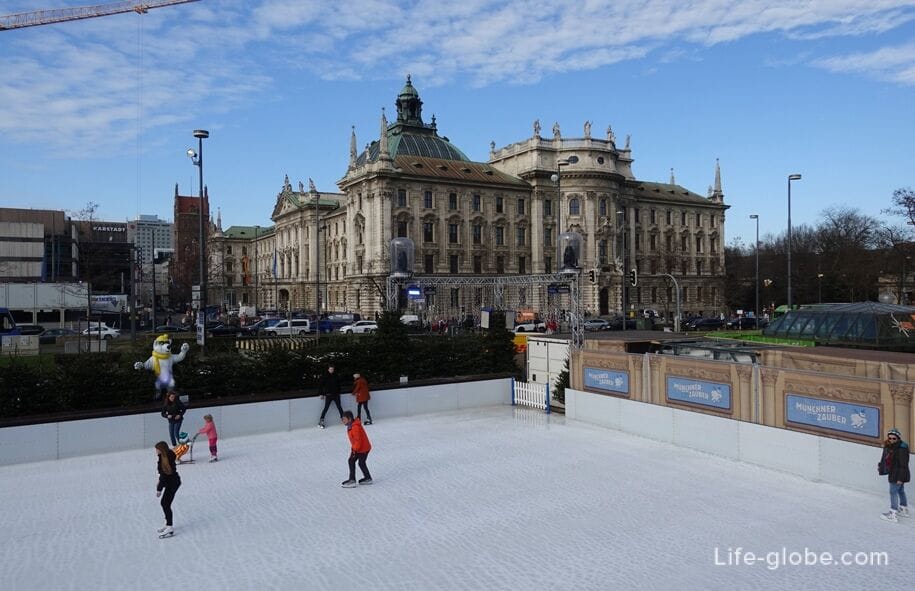
Wittelsbach Square
Wittelsbach Square (Wittelsbacherplatz) is the most beautiful classicist square in Munich.
The square received its current name in 1827, when it was named after one of the oldest noble families - the Wittelsbachs.
The center of the square is decorated with a bronze equestrian statue of Elector Maximilian I, and around the square are concentrated historical buildings, including former palaces. Learn more about Wittelsbach Square…

Fountains
In the center of Munich there are two significant large fountains:
- Neptunbrunnen Fountain (Neptunbrunnen), created in 1937 according to the plans of the sculptor Joseph Wackerle and the architect Oswald Bieber.
The fountain is 30 meters long and 15 meters wide. In the center of the large bowl of the fountain is a sculptural composition consisting of a statue of Neptune, who holds a trident on his shoulder and towers over a horse with a fish tail rising from the water. Near the horse and Neptune, tritons are depicted, from which water flows into the fountain pool.
The fountain is located in the Old Botanical Garden (Alter Botanischer Garten), which is now a public park;
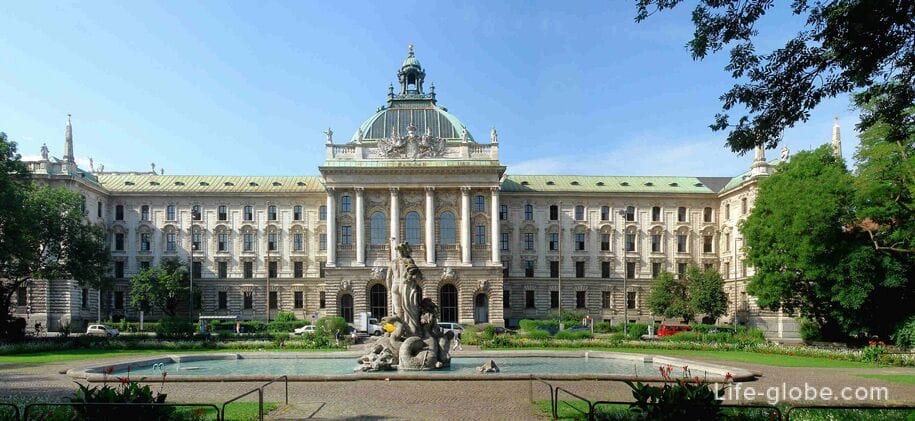

- Wittelsbach Fountain (Wittelsbacher Brunnen), built in 1893-1895 in the classical style and is considered the most beautiful fountain in Munich.
The motif of the fountain is an allegory of the natural forces of water. Thanks to its restrained, clear and at the same time refined design, as well as from the point of view of urban planning, the fountain is one of the most artistically perfect structures in Munich.
The fountain is located on the border of the squares Lenbachplatz and Maximiliansplatz.
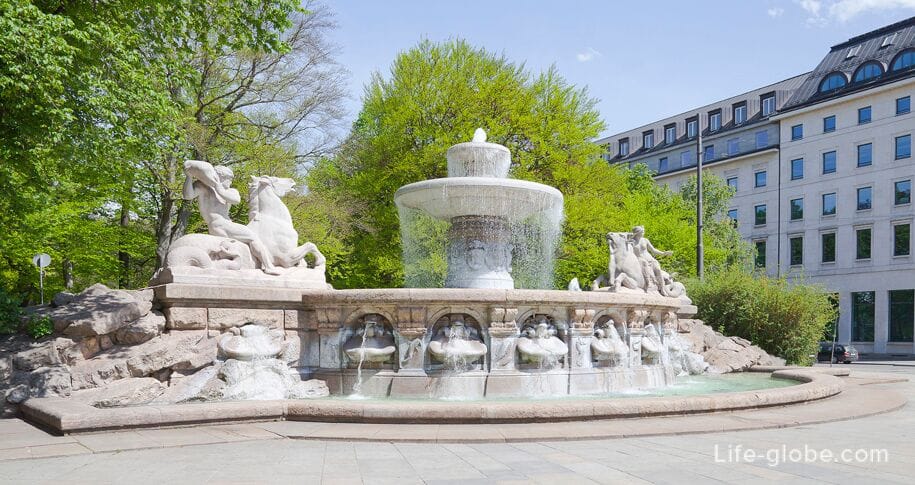
Nymphenburg Palace
Schloss Nymphenburg (Schloss Nymphenburg) is a palace complex, which is one of the most majestic royal palaces in Europe.
The palace was built starting in 1664, and for many years served as the main summer residence of the rulers of Bavaria from the Wittelsbach dynasty.
Some of the halls and rooms of the palace still display their original Baroque decorations and can be visited.
The palace complex also includes two museums: the Carriage Museum (Marstallmuseum) and the Porcelain Museum (Porzellanmuseum).

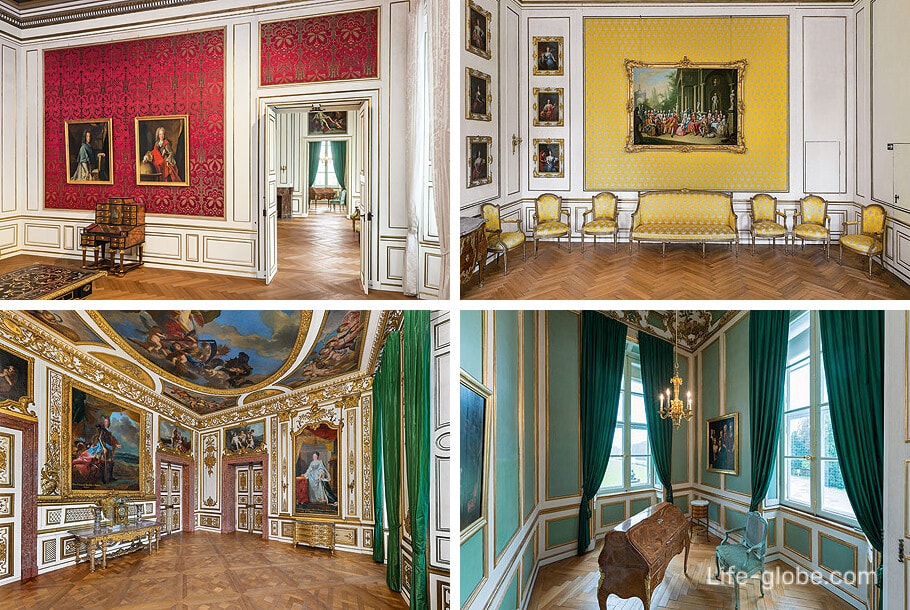
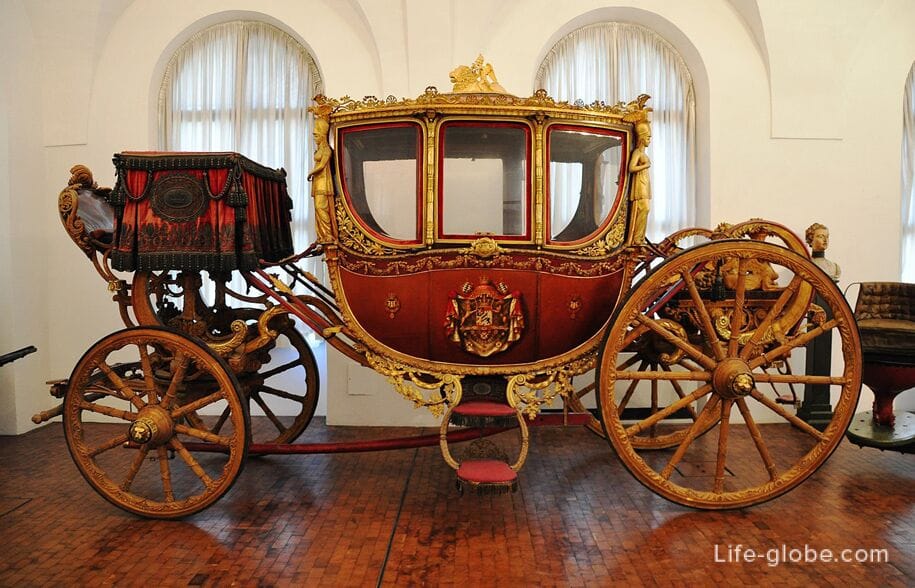
Adjacent to the palace is the Schlosspark Nymphenburg, whichincludes: a central canal with a" Grand Cascade " - a Baroque waterfall; fountains; alleys and walking paths; statues and sculptures; two lakes and the Apollo-Tempel monopter-a rotunda temple built in 1862-1865.
For a fee, you can visit several pavilions - palaces in miniature in the park.
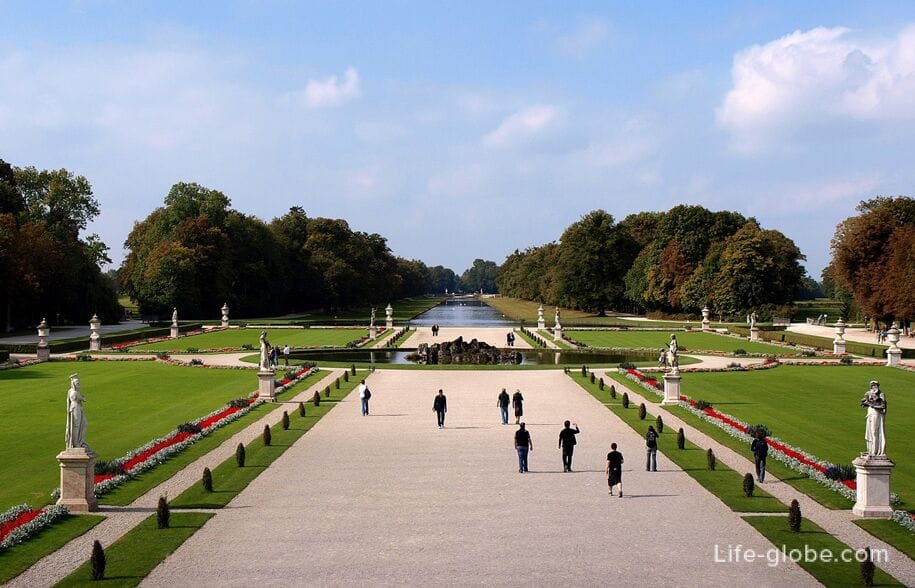
Address of the palace and park: Schloß Nymphenburg, 1. Nymphenburg Palace website: schloss-nymphenburg. More about the Nymphenburg Palace and the park…
English Garden
The Englischer Garten is a large public park in the center of Munich, one of the largest urban parks in the world.
The park has existed for more than 230 years.
Currently, the English Garden is a popular place for walking, recreation and sports.
On the territory of the park there are several significant attractions, including: an observation deck with a rotunda, a Japanese tea house, part of the Berlin Wall, a Chinese tower, a "standing" wave on the Eisbach, restaurants with beer gardens, etc. Learn more about the English Garden…
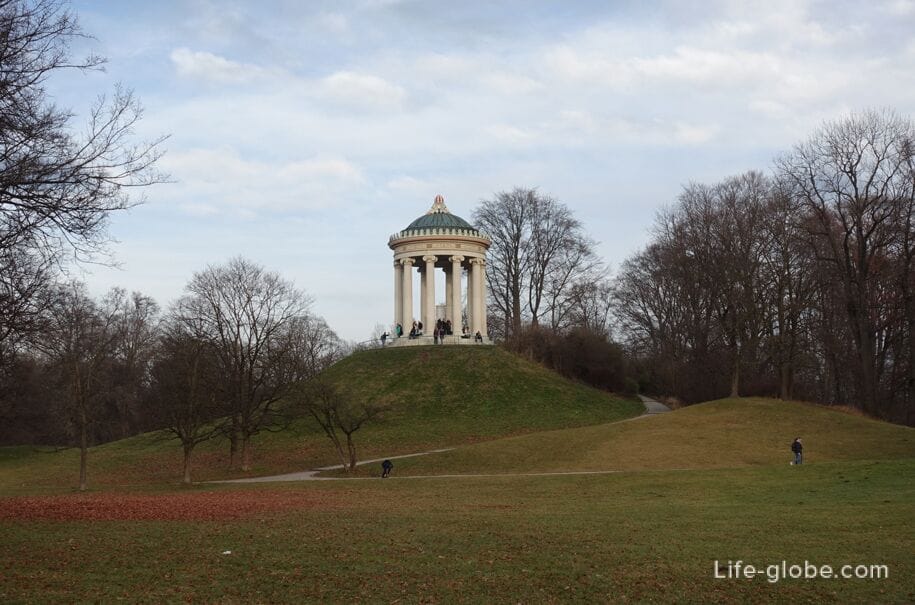
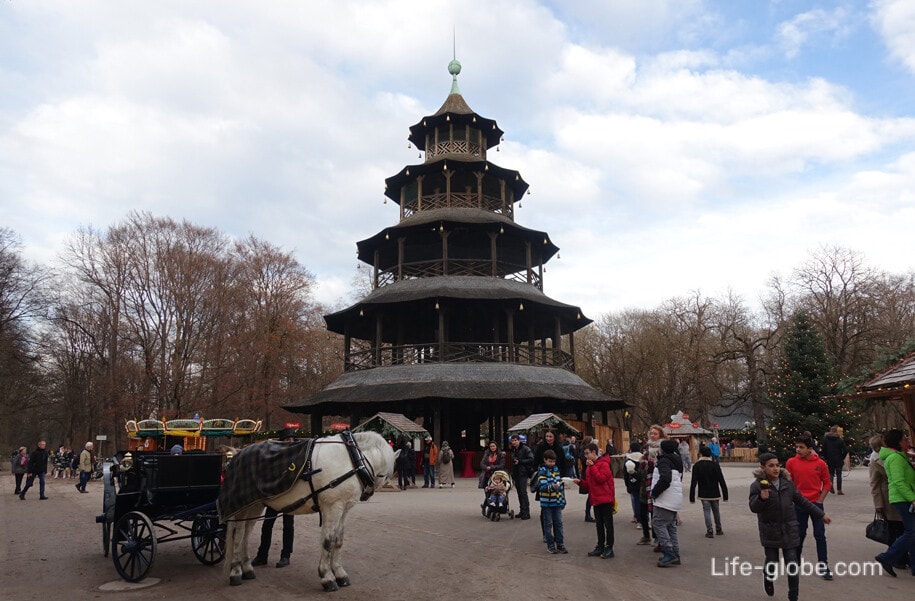
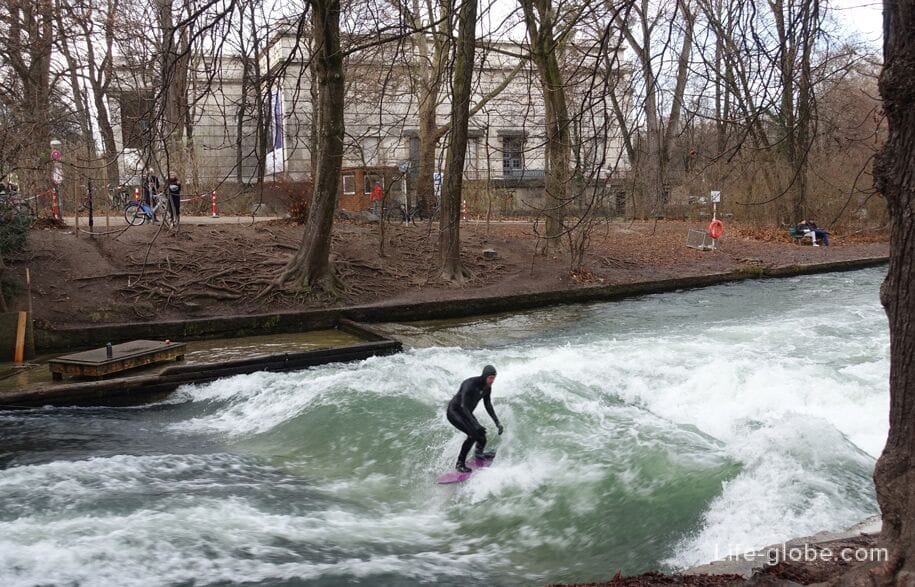
Area of Art
The Kunstareal München (Kunstareal) is an art zone, the museum district and cultural center of Munich, which is an area where important museums and galleries of the city are concentrated. One of the most visited:
- Old Pinakothek (Alte Pinakothek) - a museum with a collection of paintings by masters from the Middle Ages to the middle of the 18th century;
- Neue Pinakothek (Neue Pinakothek) - a museum that presents paintings and sculptures by masters of the second half of the 18th and early 20th centuries;
- Pinakothek der Moderne (Pinakothek der Moderne) - one of the world's largest art museums of modern art, mainly 20-21 centuries.;
- Museum Brandhorst (Museum Brandhorst) - an art museum dedicated to contemporary art from the late 1950s to the present day;
- Museum of Egyptian Art (Staatliches Museum Ägyptischer Kunst) - an archaeological museum containing the Bavarian state collection, which focuses on the art of ancient Egypt;
- Glyptothek - a museum with a collection of ancient sculptures and glyptics;
- The Staatliche Antikensammlung is a museum that houses one of the most extensive collections of Greek, Etruscan, and Roman antiquities in Germany.;
- The city gallery in the Lenbach house (Städtische Galerie im Lenbachhaus) is an art museum with a collection of works by Munich artists, especially from the 18th and 19th centuries. Learn more about the Area of art and museums...
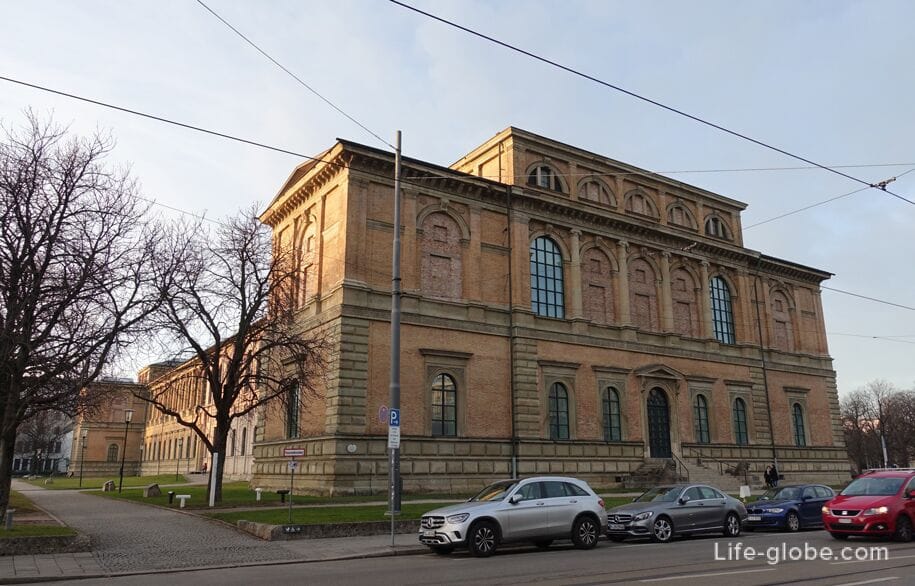
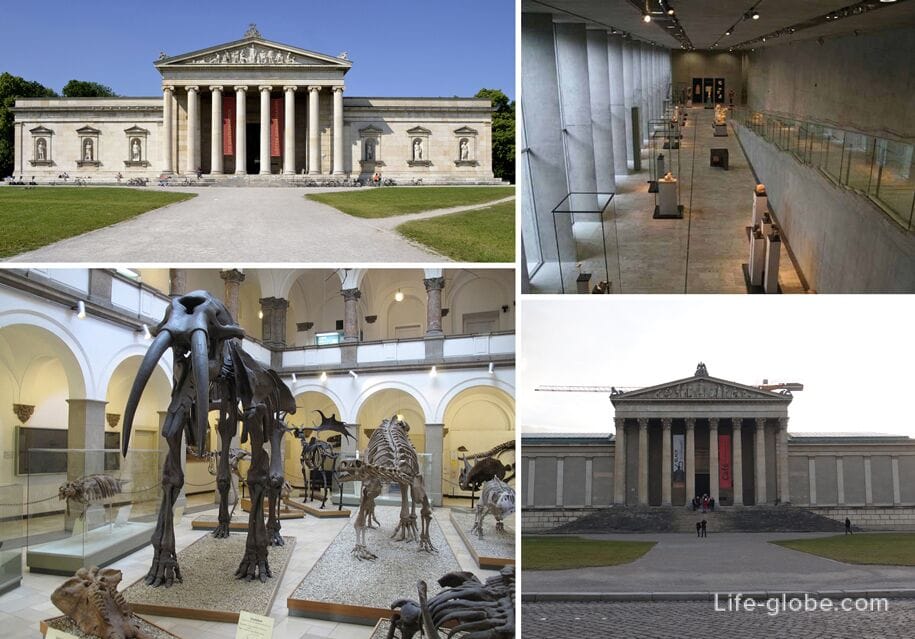
Royal Square
The Royal Square (Königsplatz) was created in the style of European neoclassicism in the 19th century by the German court architect Leo von Klenze by decree of Crown Prince Ludwig I of Bavaria as a "Place of Culture".
On the Royal Square there are:
- Propylaea (Propyläen) - a historical monument, which is a former gate (front passage), erected in 1862;
- museums: Glyptotheca and the State Antique Collection. Learn more about the Royal Square…
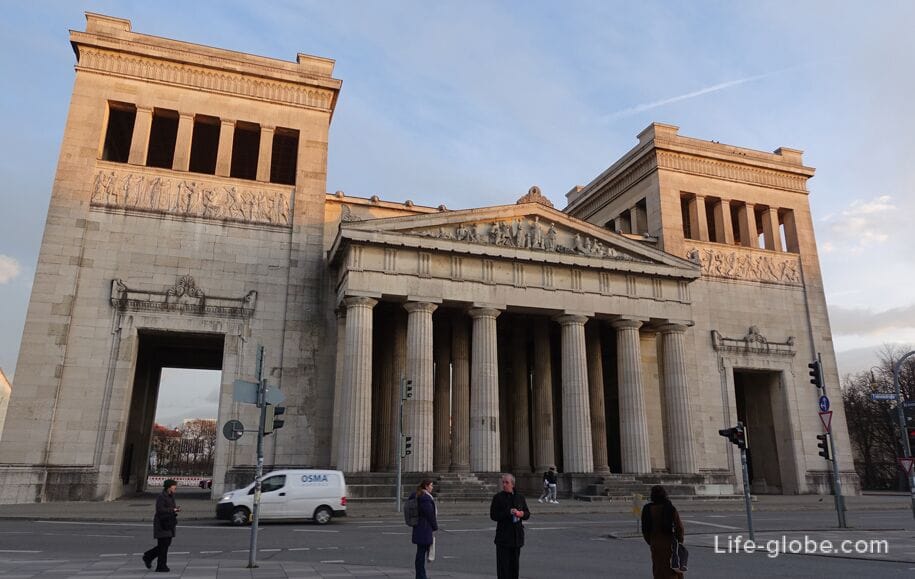
German Museum
The Deutsches Museum is the world's largest and most important science and technology museum, with more than 30,000 exhibits from 50 fields of science and technology, from astrophysics to cell biology.
The German Museum is not only an exhibition space, but also a huge playground where visitors can not only see, but also try out objects - turn buttons, switch levers and switches, and touch many exhibits.
The German Museum is located on Museum Island (Museumsinsel), at the address: Museumsinsel, 1.
Museum website: deutsches-museum. Learn more about the German Museum…
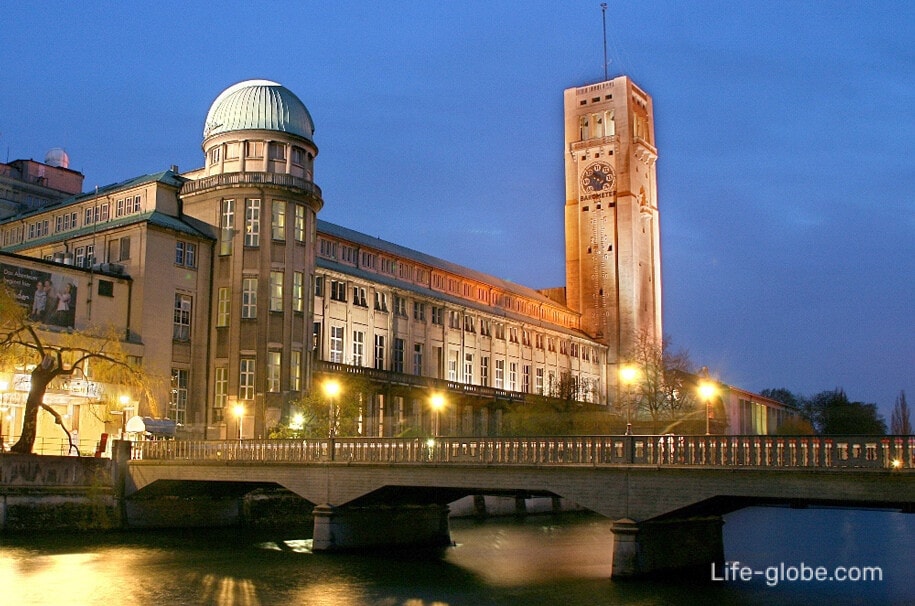
Bavarian National Museum
The Bayerisches Nationalmuseum (Bayerisches Nationalmuseum) is one of the most important museums in Munich, with museum branches located extensively outside the city.
Today, the museum is one of the most important arts and crafts museums in Europe and one of the largest art museums in Germany.
The main core of the collection of the Bavarian National Museum in Munich comes from the personal art collection of the Wittelsbach dynasty. Of particular importance to the collections are the exhibits that go far beyond the borders of Bavaria.
The main building of the museum, designed in the eclectic style (a mixture of Romanticism, Gothic, Baroque and Renaissance), is a historical monument.
Address of the main building of the Bavarian National Museum: Prinzregentenstrasse, 3 (Prinzregentenstraße).
Museum website: bayerisches-nationalmuseum. Learn more about the Bavarian National Museum…
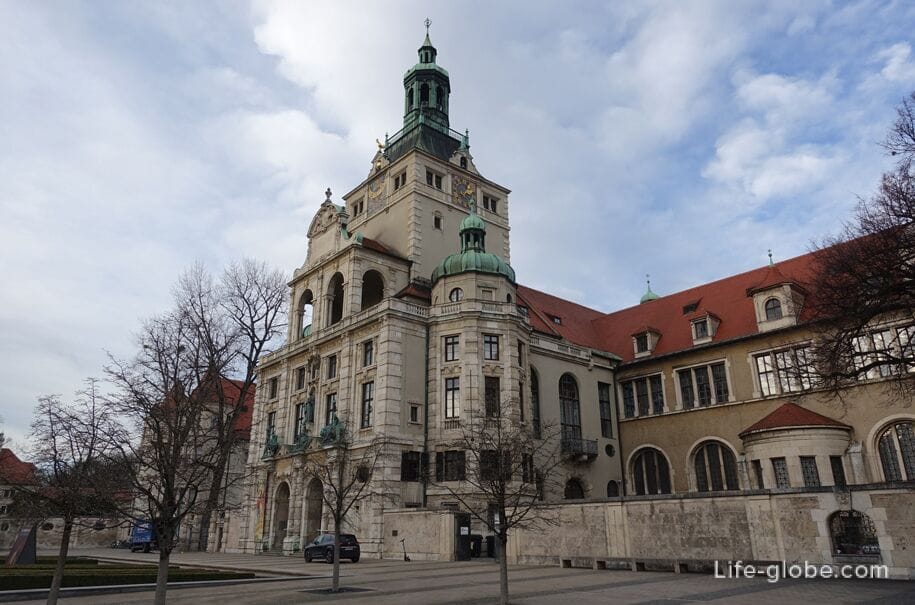
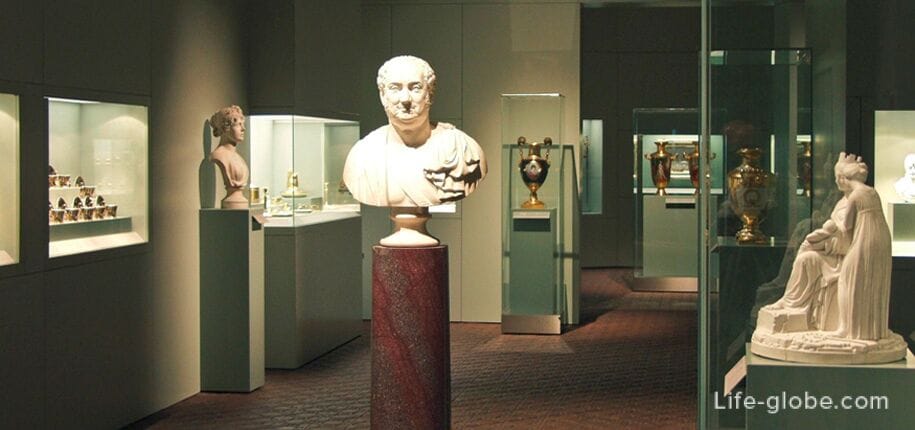
Angel of Peace (observation deck)
The Angel of Peace Memorial (Friedensengel) is dedicated to the 25th anniversary of the peace treaty after the end of the Franco-Prussian war of 1870-1871.
The Peace Monument consists of an open square temple built on the Greco-Ionian model and a high Corinthian-style column, which is decorated with a bronze figure of a golden angel.
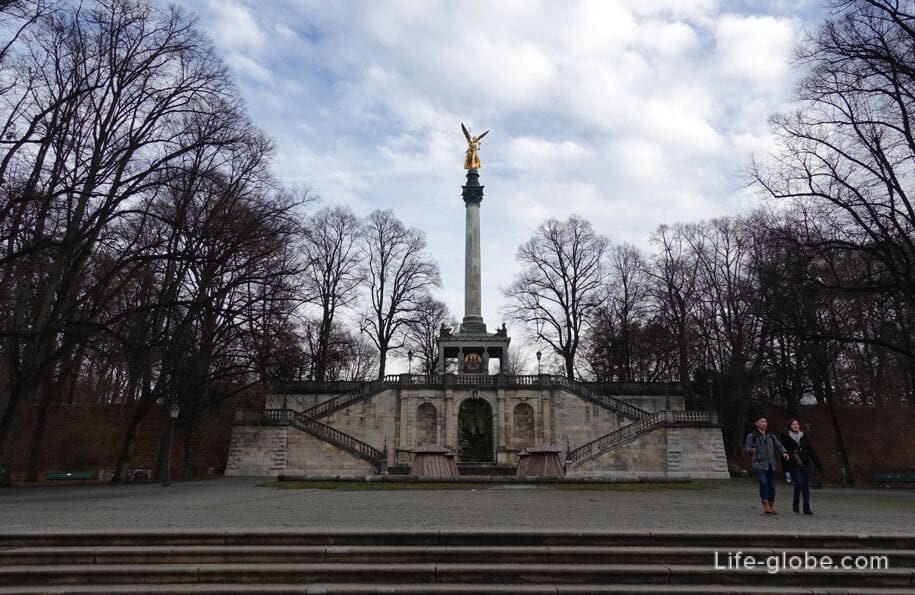
Near the column is an open area-the Prinzregent-Luitpold-Terrasse (Prinzregent-Luitpold-Terrasse), which offers a panoramic view of the Prinzregentenstrasse and part of the historic center of Munich. Read more about the Angel of Peace Memorial and the observation deck…
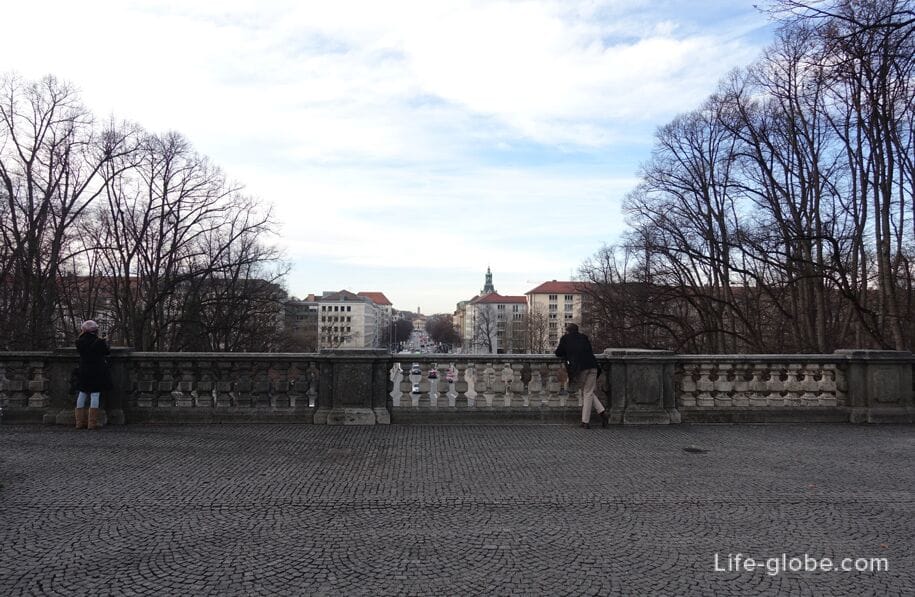

Maximilianeum
Maximilianeum (Maximilianeum) - a historic luxury building, the construction of which was started by decree of King Maximilian II in 1857 in order to support gifted students and accommodate scholarship holders.
Since 1949, the Maximilianeum has also housed the Bavarian Landtag (Bavarian State Parliament).
The building has Gothic and Renaissance features. The facade of the building is decorated with sculptures and statues, perfectly fitting arches, high arched windows, recessed in niches, columns, mosaics and niches with busts, as well as stucco decorations.
A wide monumental staircase leads to the main entrance of the building, which faces the Maximiliansbrücke Bridge. From the stairs you can enjoy views of the bridge, Maximilianstrasse and some of the surrounding area.
Maximilianeum address: Max-Planck-Straße, 1 (Max-Planck-Straße). More about Maximilianem…
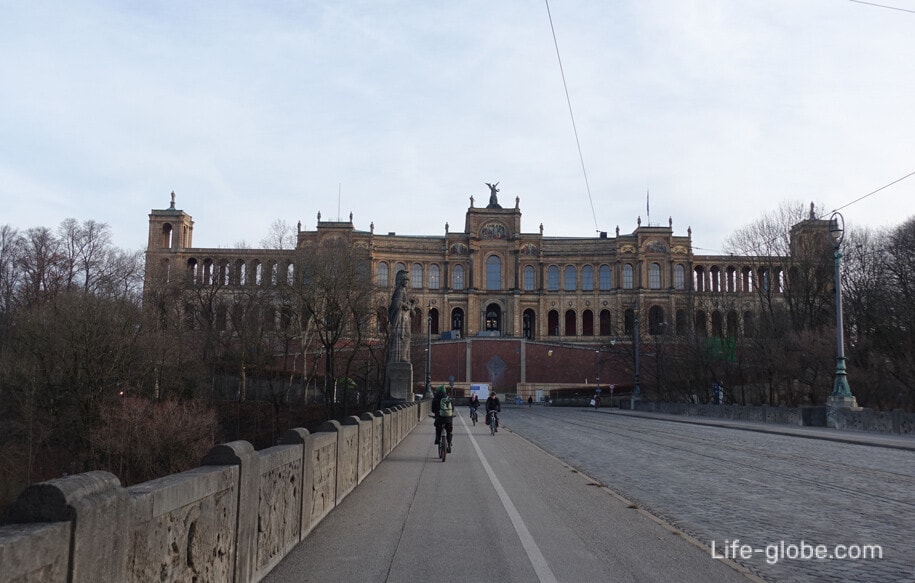
Victory Gate
The Victory Gate (Siegestor) is a classic triumphal arch, which is one of the symbols of Munich and rises at the end of Ludwigstrasse.
The gate was created and built by order of King Ludwig I of Bavaria in the period from 1843 to 1852.
The gate was originally dedicated to the glory of the Bavarian Army.
Today, the three-arched Arc de Triomphe is a monument and reminder of the world, as well as an unconditional and silent witness to the rich and, at times, difficult history of the city and the country.
The triumphal Arch is crowned by a large bronze sculpture consisting of a statue of Bavaria sitting on a chariot drawn by four lions. More about Victory Gate…
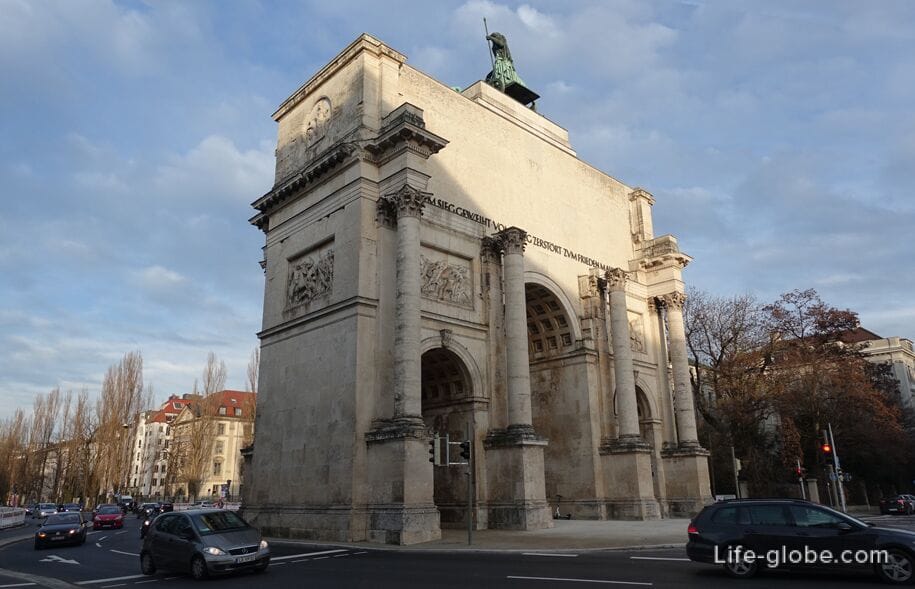
Olympic Park (Olympic Tower)
The Olympic Park (Olympiapark) is a park complex built for the 1972 Summer Olympics in Munich.
Today, the Olympic Park serves as a venue for sports, cultural, social and religious events and festivals, as well as a place for sports, walking and recreation.
In addition to the sports facilities themselves, the Olympic Park complex includes: a landscape park with Olympic Observation Mountain (Olympiaberg), Lake Olympia, Munich Olympic Avenue of Stars, beer garden, restaurants, aquarium, residential area, shopping center and The Olympic Tower (Olympiaturm), which is the highest observation deck in Munich. Learn more about the Olympic Park…


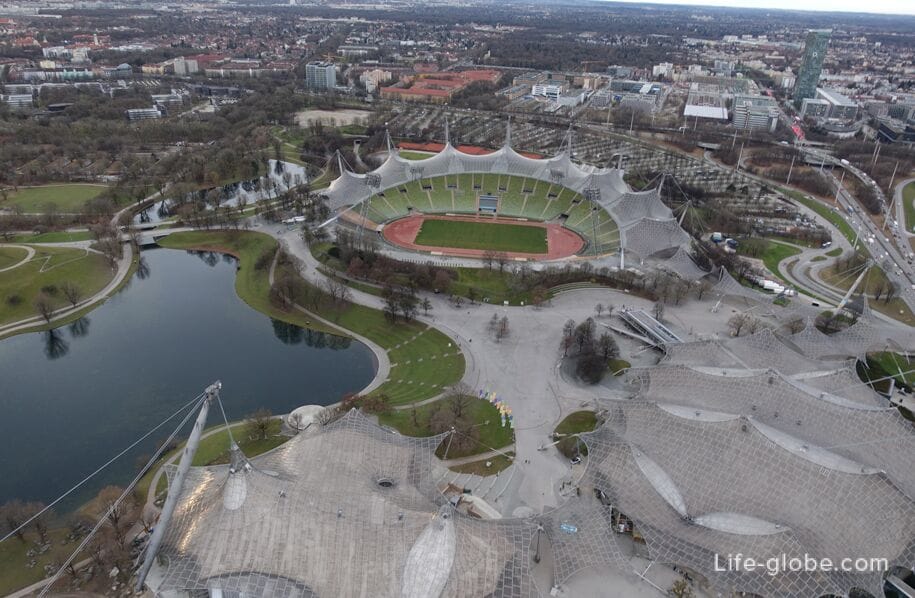
BMW and BMW Welt Museum
The BMW Museum is an automobile museum dedicated to the history of the BMW brand and products.
On the exhibition areas of the museum are the original and most interesting exhibits of cars and motorcycles of different years, engines and turbines of aircraft. Some of the museum's spaces are dedicated to advertising, design, and the development of the BMW brand.
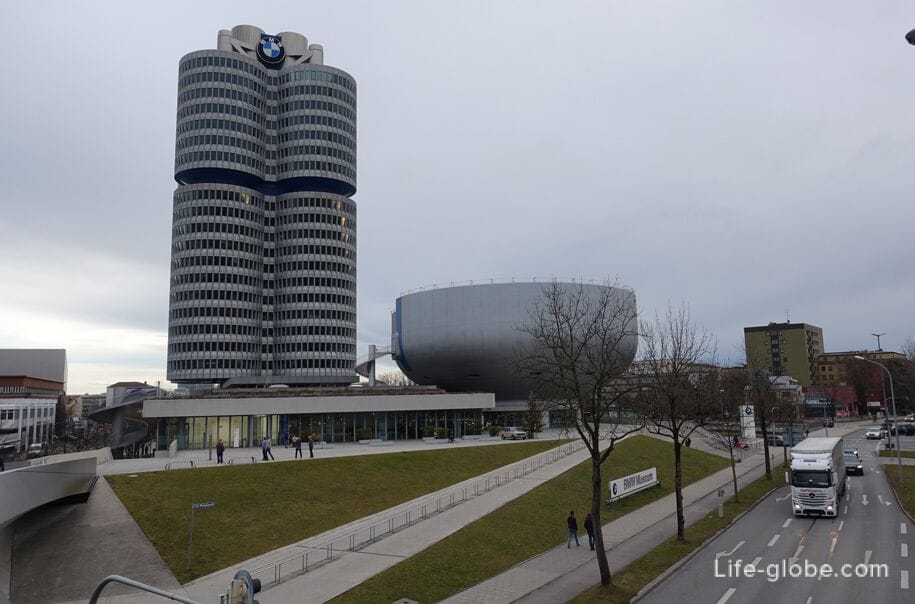
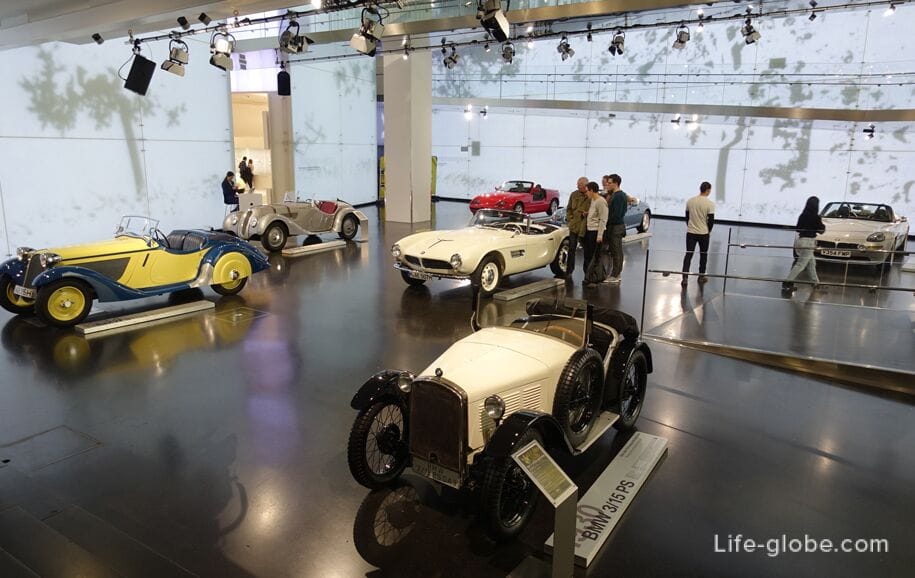
Next to the museum is located BMW Welt - a multifunctional exhibition center designed for the presentation of BMW products, distribution of BMW cars, conferences and forums.
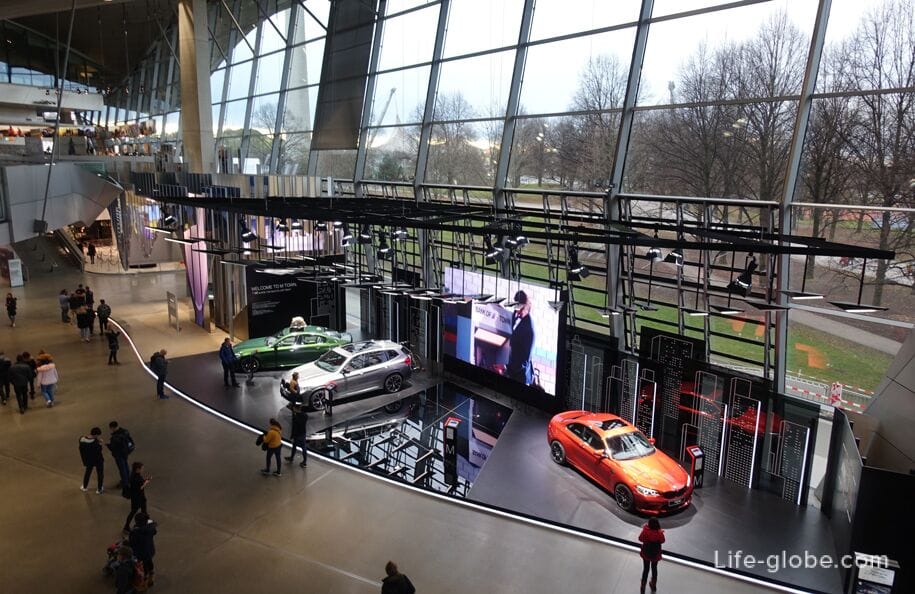

Address of the BMW Museum: Am Olympiapark, 2.
Address of the BMW Welt center: Am Olympiapark, 1.
Website: bmw-welt. Learn more about the BMW Museum and exhibition center…
Vienna Square
Vienna Square (Wiener Platz / Viener Platz is a small historic square in Munich.
On the square, from 1889 to the present day, there is a small permanent food market. The market in the square is open every day except Sunday.
Also notable on the square are the historic buildings, the Hofbräukeller restaurant with a beer garden, the Maypole and the Fischerbuberl-Brunnen fountain, in the upper central part of which a naked boy in a panama hat is depicted standing on a ball and holding a fish in each hand. Learn more about Vienna Square…
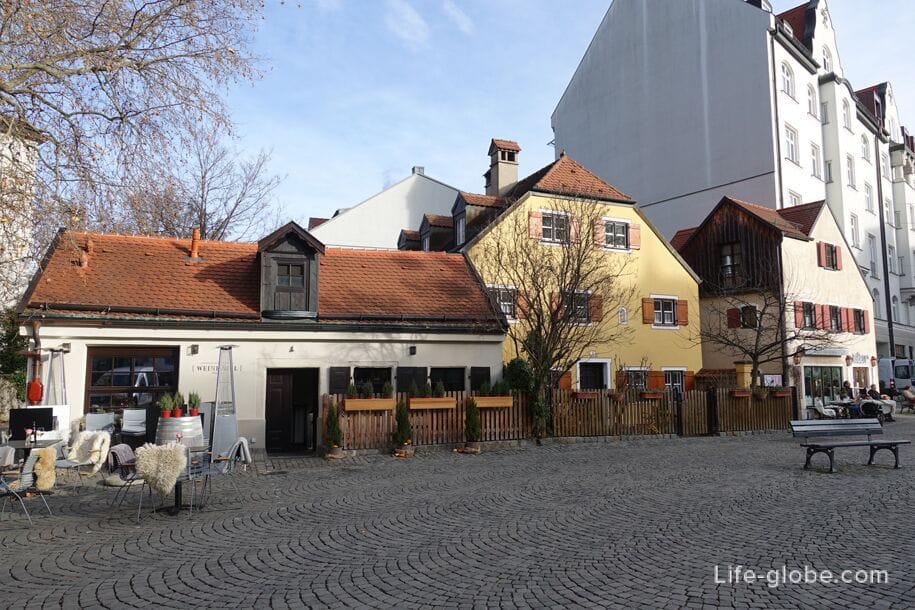
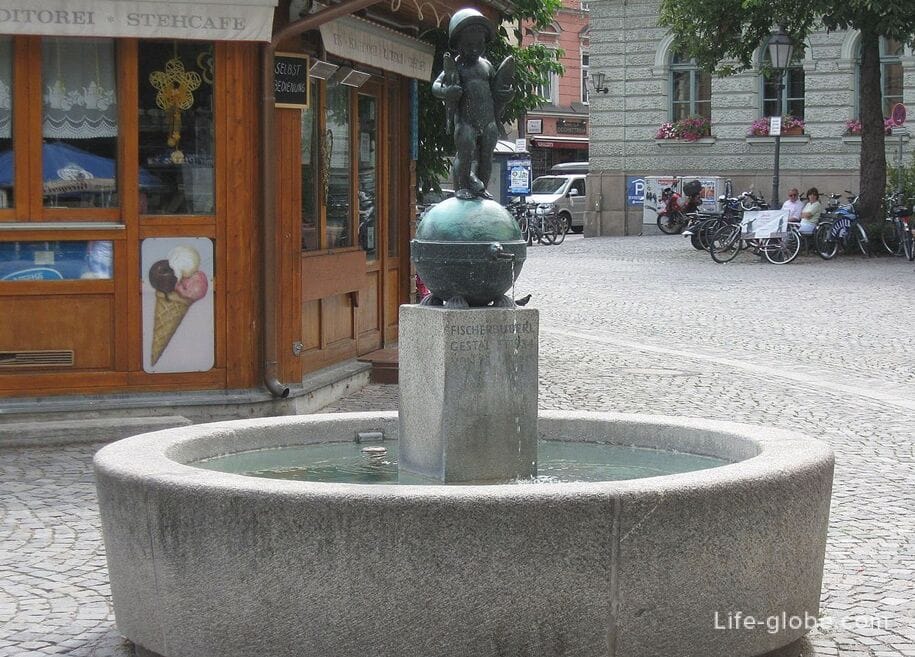
View of the Viennese Square and the Church of St. John the Baptist (center in the background)
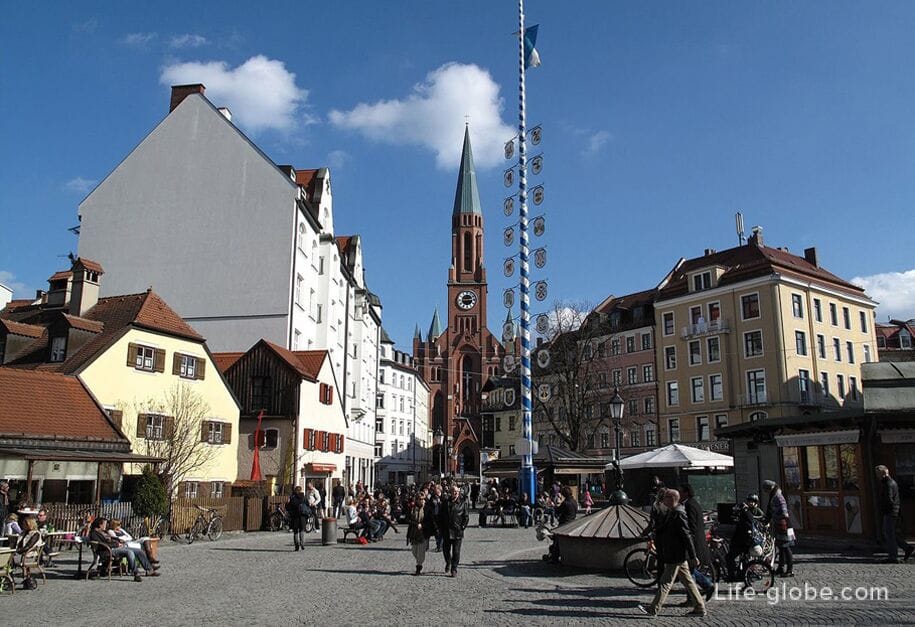
Statue of Bavaria and Hall of Fame (Theresa's Meadow)
The Bavaria Statue is a monumental bronze statue that, in its female form, represents the Bavarian region - its power and glory.
The statue was commissioned by King Ludwig I of Bavaria and made from 1844 to 1850.
An internal spiral staircase, located in Bavaria, leads to a platform at the head of the statue, from where small openings overlook the Therese Meadow and the surrounding area.
The Hall of Fame (Ruhmeshalle mit Bavaria) is a monumental structure that, like the statue "Bavaria", was commissioned by King Ludwig I of Bavaria and erected between 1843 and 1853.
The purpose of the construction was to honor the memory and glory of the outstanding personalities of Bavaria.
The Hall of Fame is located behind the statue of Bavaria and is a gallery with busts of famous Bavarians of past centuries.
The address of the statue and the hall: Theresienhöhe, 16 (Theresienhöhe). Read more about the Bayern Statue and Hall of Fame…
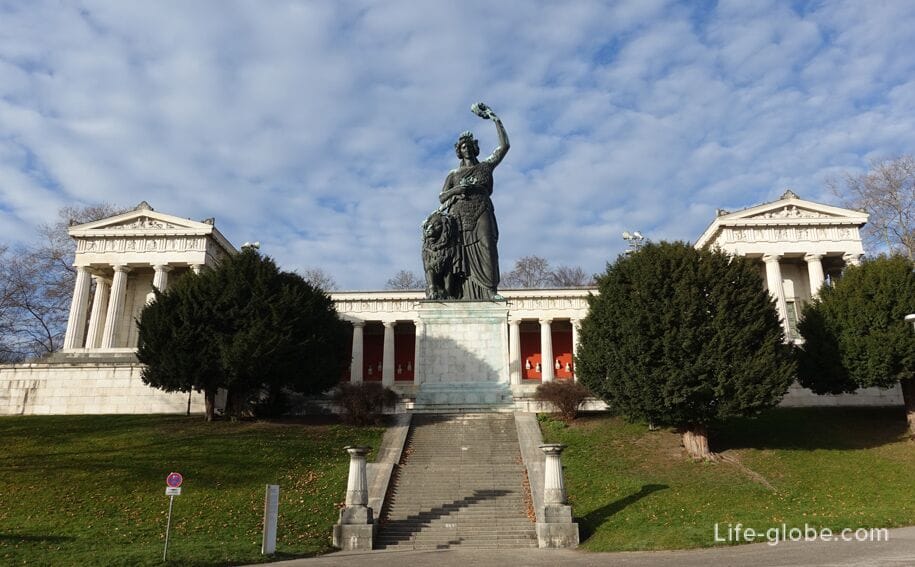

The Statue of Bavaria and the Hall of Fame are located at the Theresienwiese (Theresienwiese), which is the largest venue in Munich for celebrations and festivals, including:
- the world's most famous and largest folk festival (beer festival) - Oktoberfest (Oktoberfest), which is held annually from the second half of September to the beginning of October;
- the winter festival "Tollwood", which is held in December and includes a Christmas market and cultural events held until the New Year. Learn more about Teresa's Meadow and festivals…
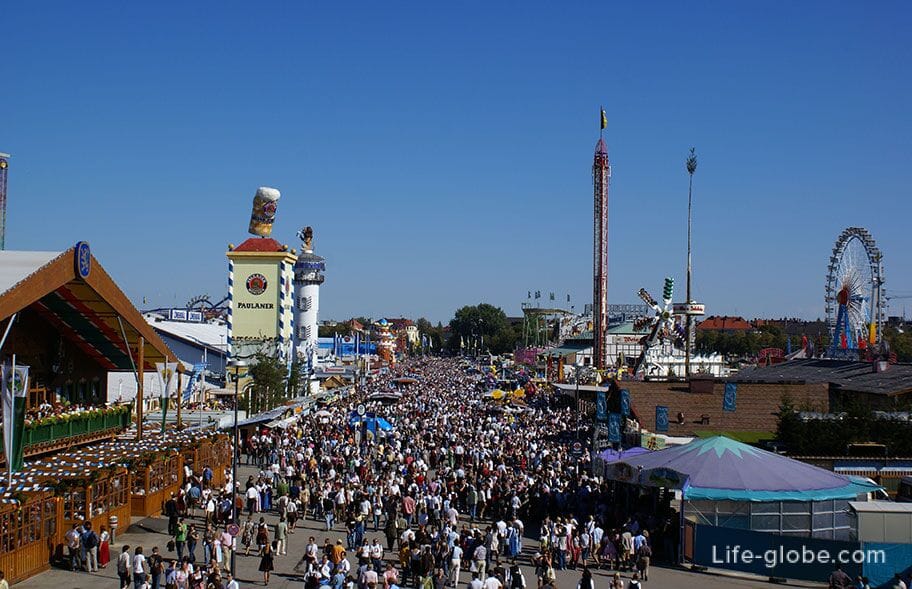
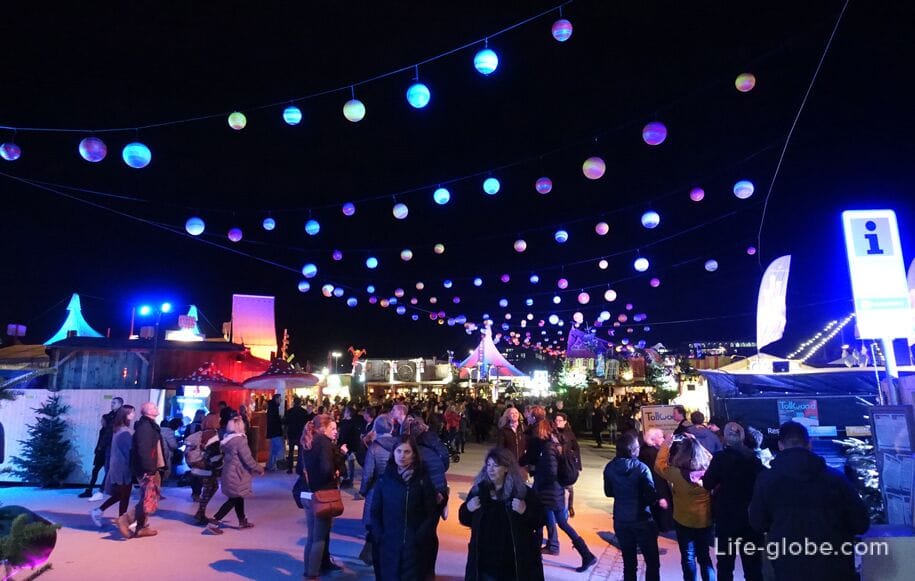
Hellabrunn Zoo
The Hellabrunn Zoo (Münchner Tierpark Hellabrunn) is a geozoo park where animals are housed in spacious enclosures according to their habitat zones: from the Arctic Circle to Africa, from Europe to Asia and from America to Australia.
The zoo was founded in 1911. It is one of the most famous scientifically managed zoos in Europe. More than 750 species of animals live in a natural place in the landscape protection zone of the meadows of the Izar River.
The zoo's addressis 30 Tierparkstrasse. Zoo website: hellabrunn.
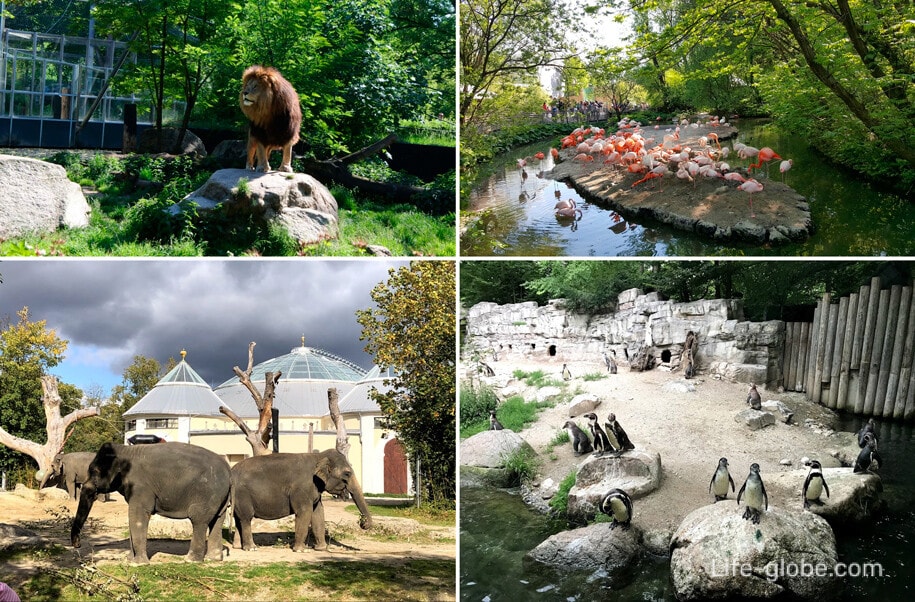
Botanical Garden Munich-Nymphenburg
The Botanical Garden Munich-Nymphenburg (Botanischer Garten München-Nymphenburg) is a botanical garden and arboretum established in 1914.
Today, more than 19,000 species and subspecies of plants are grown in the garden, and it also serves to preserve rare plants and European bee species.
The main areas of the botsad include: an alpine garden, an arboretum, a collection of marsh and steppe plants, rhododendrons, a rose garden, a systematic garden, aquatic plants in aquariums, and an extensive greenhouse complex.
The garden's addressis 65 Menzinger Strasse. Botsad website: botmuc.
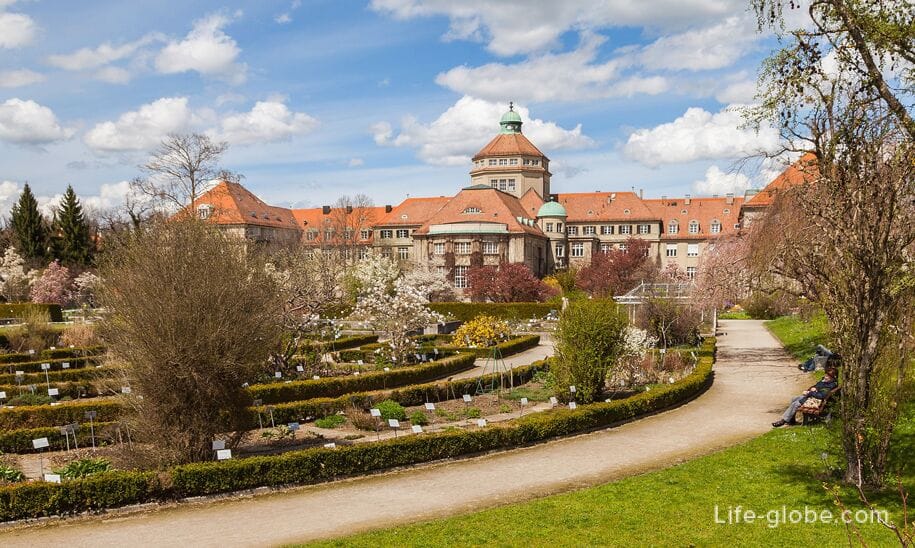
This might be interesting
All accommodation options in Munich, including near certain attractions and in the city center, can be viewed and booked here




